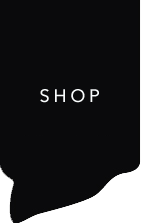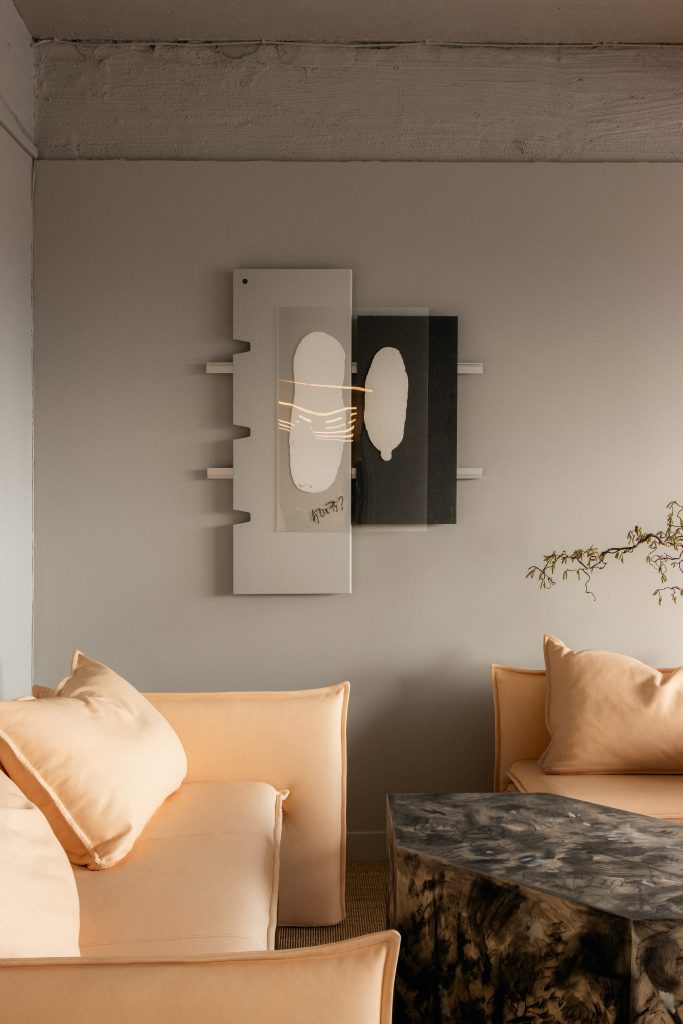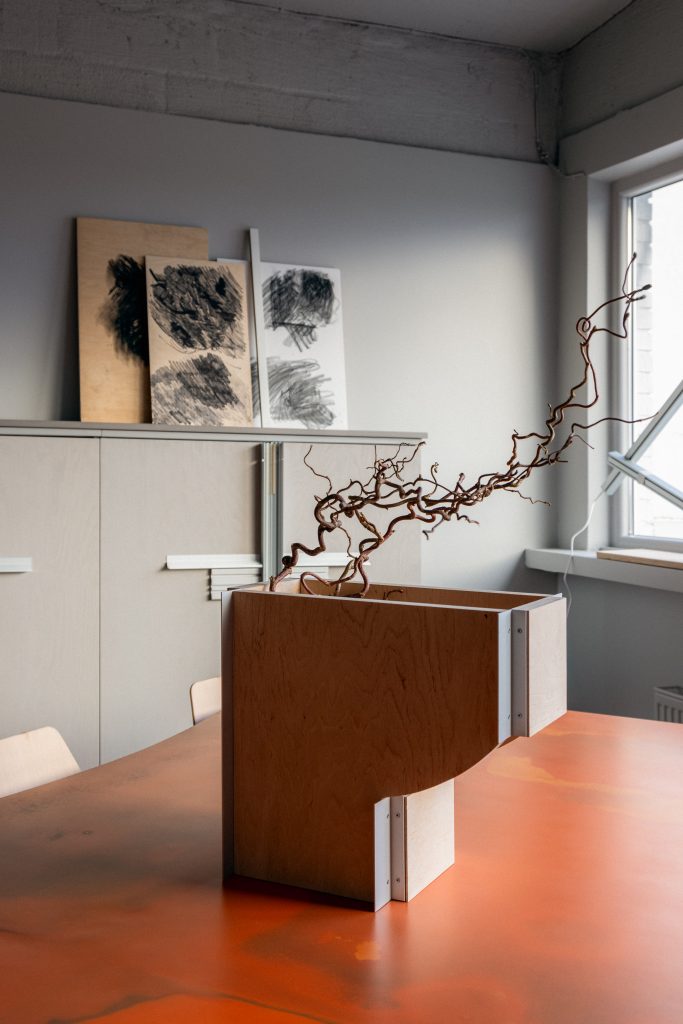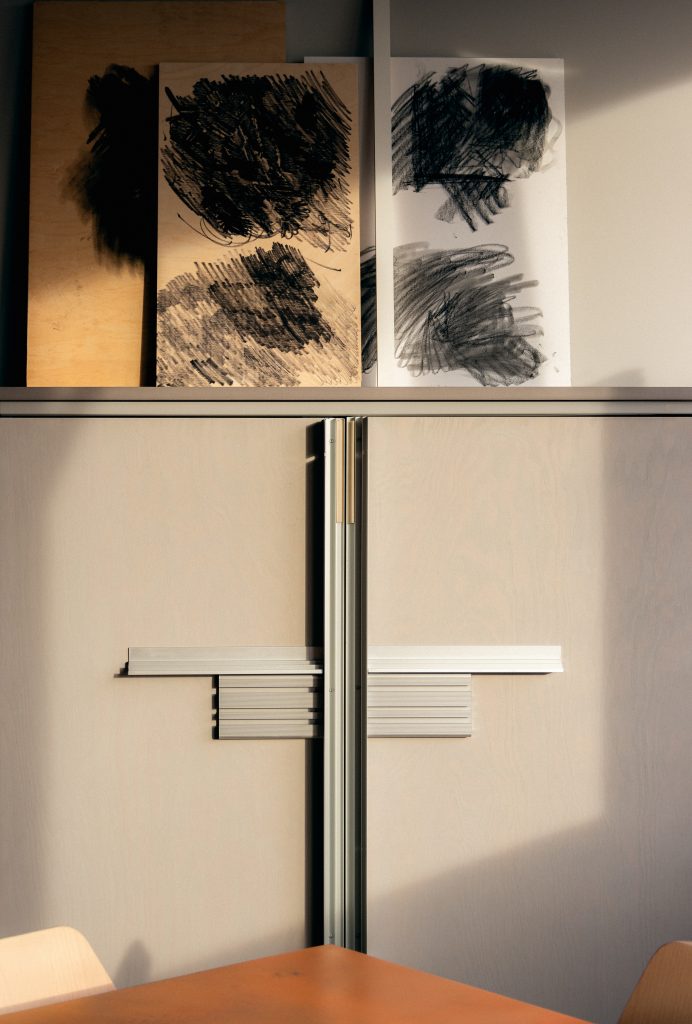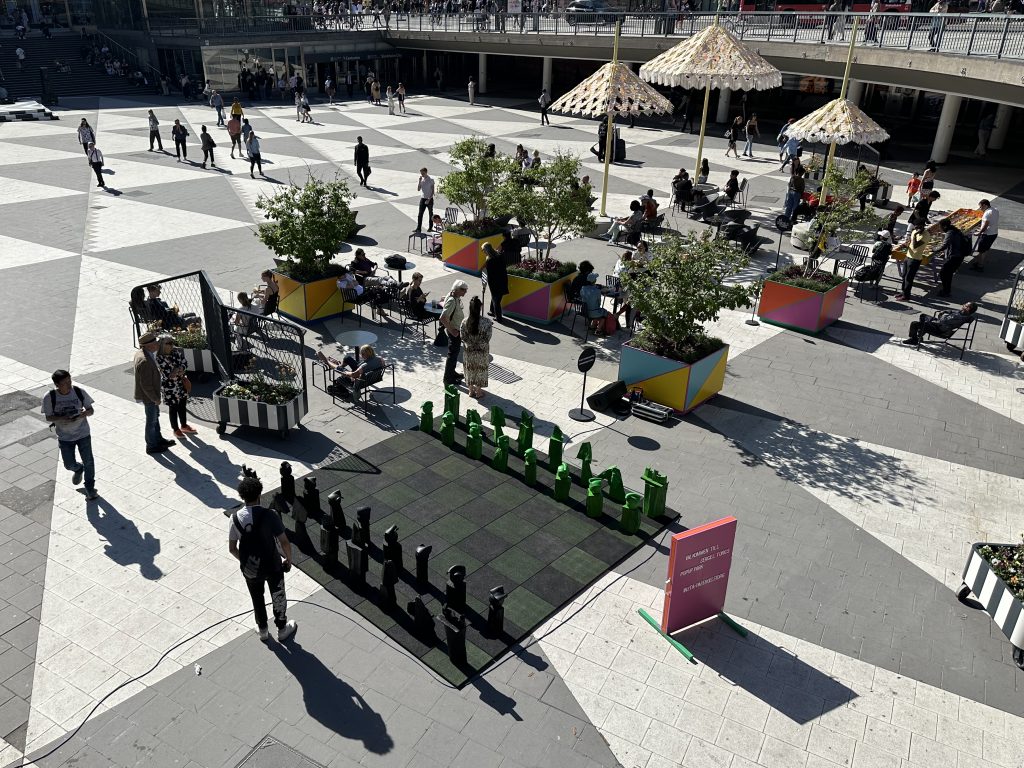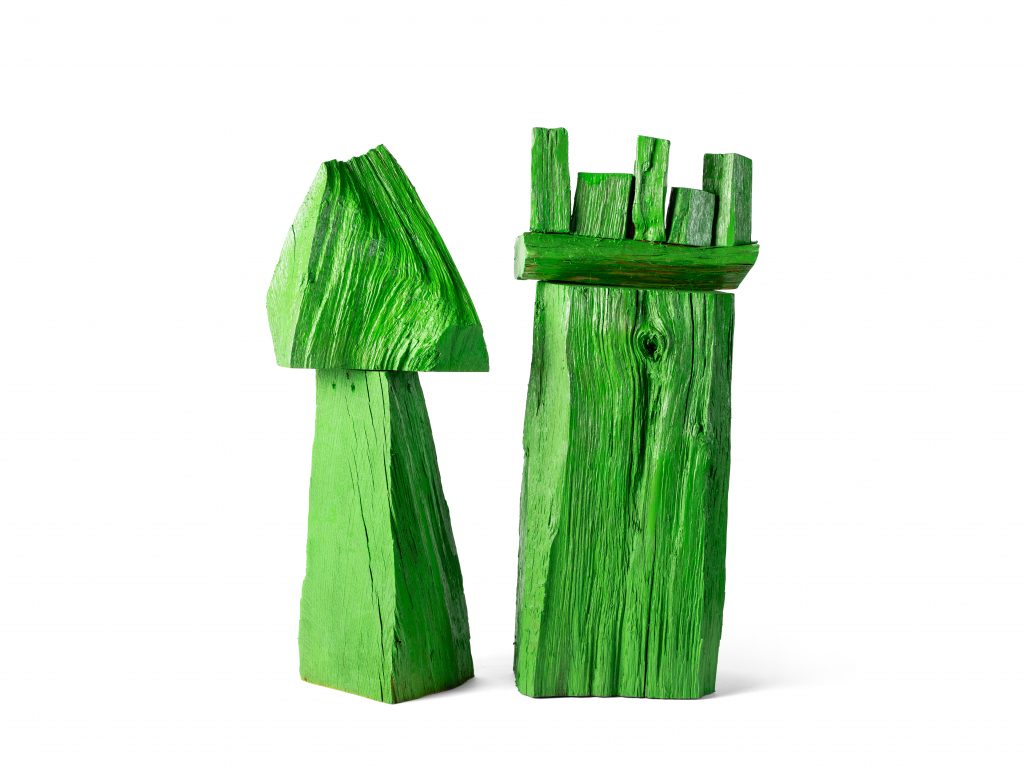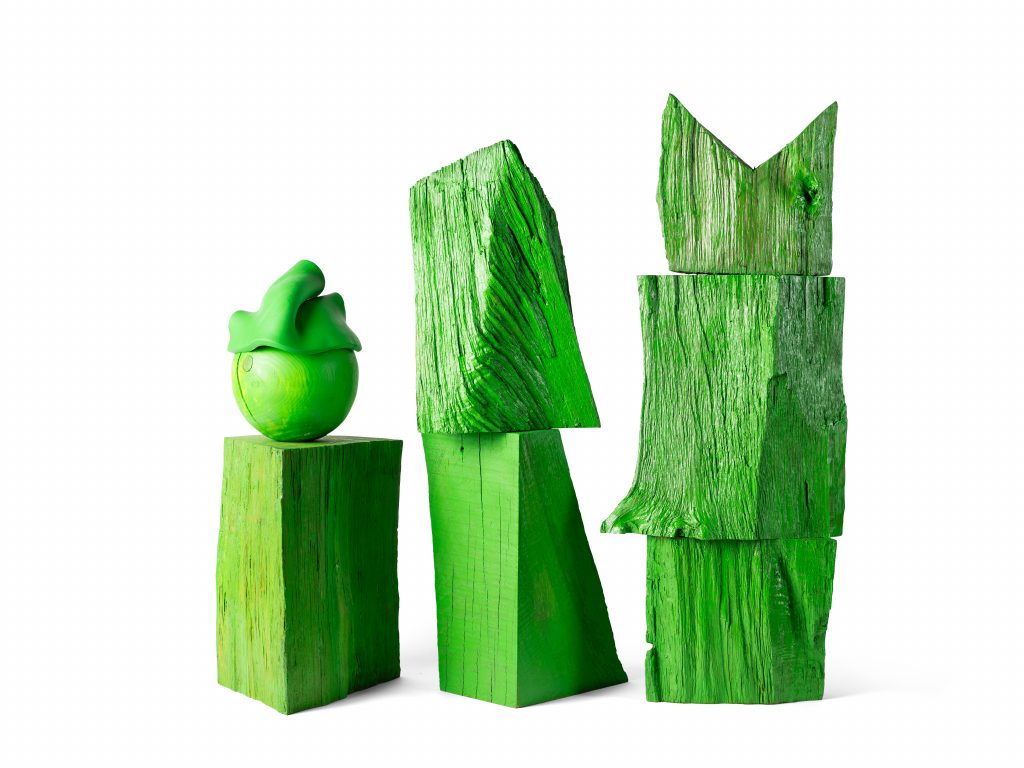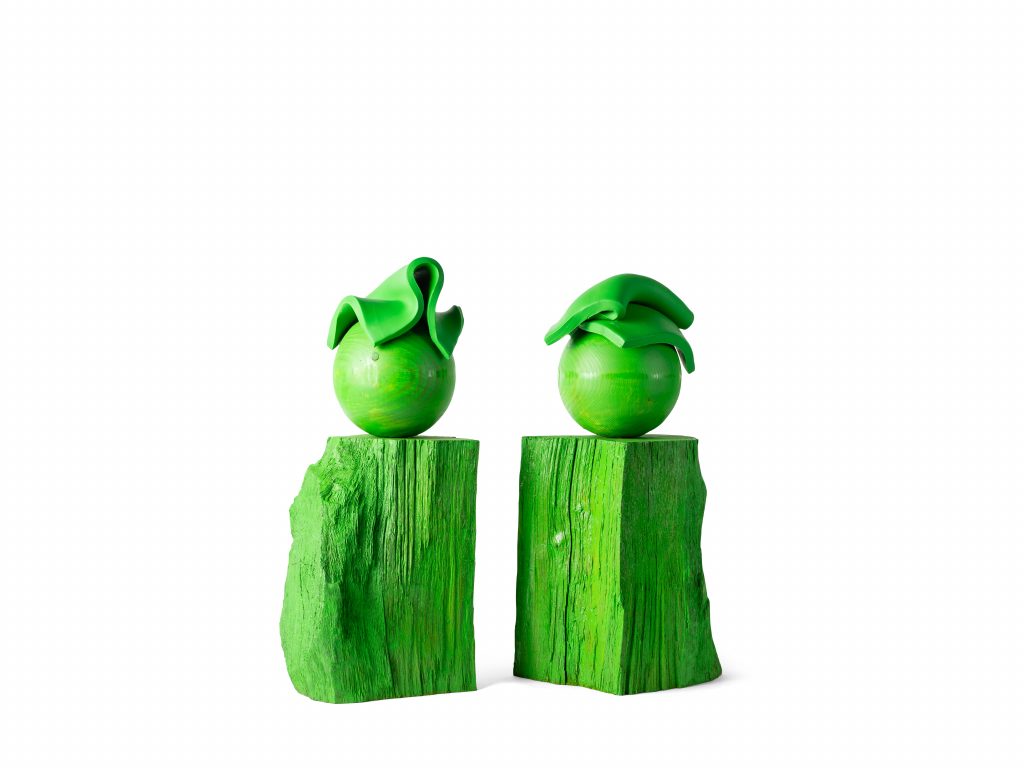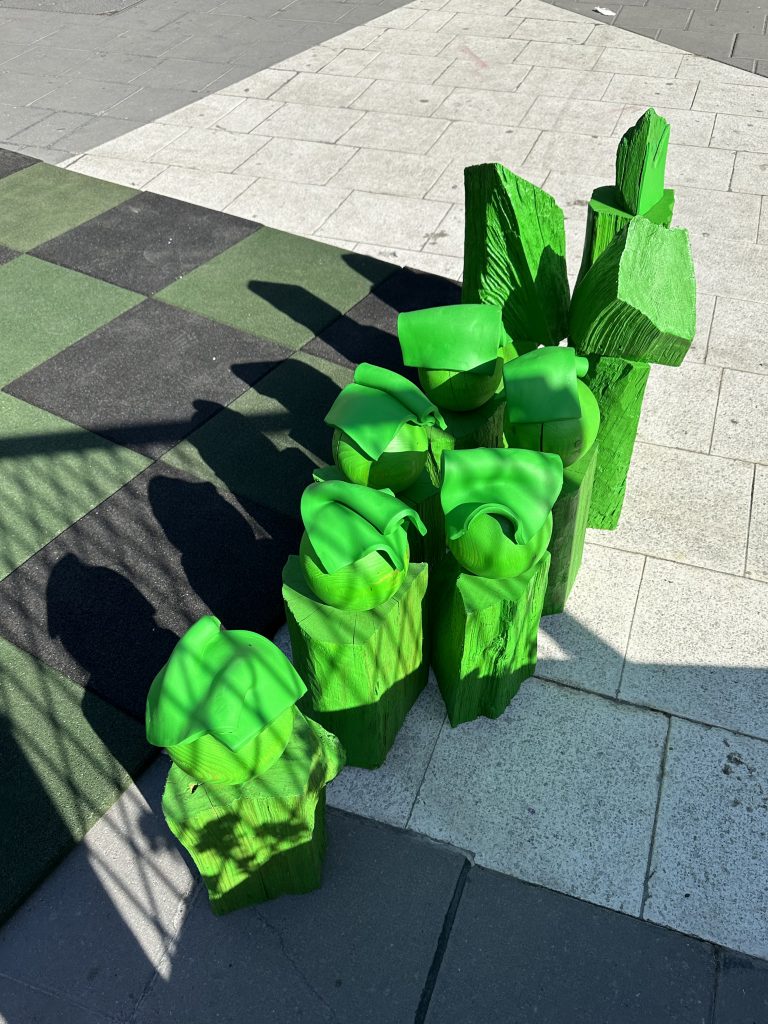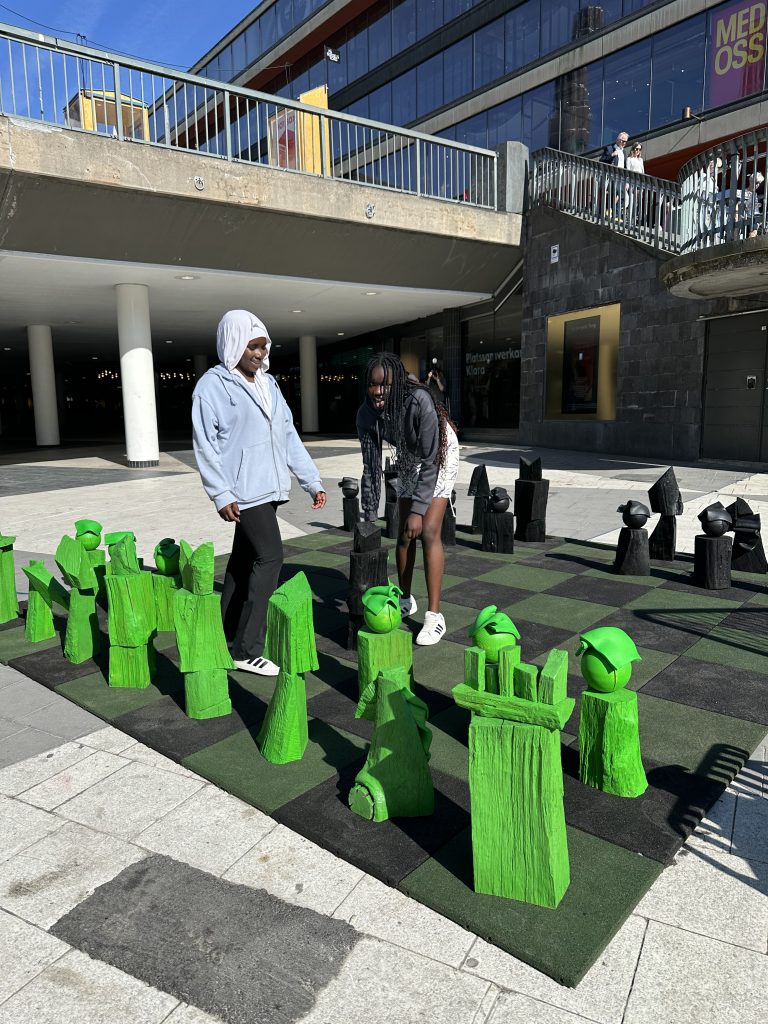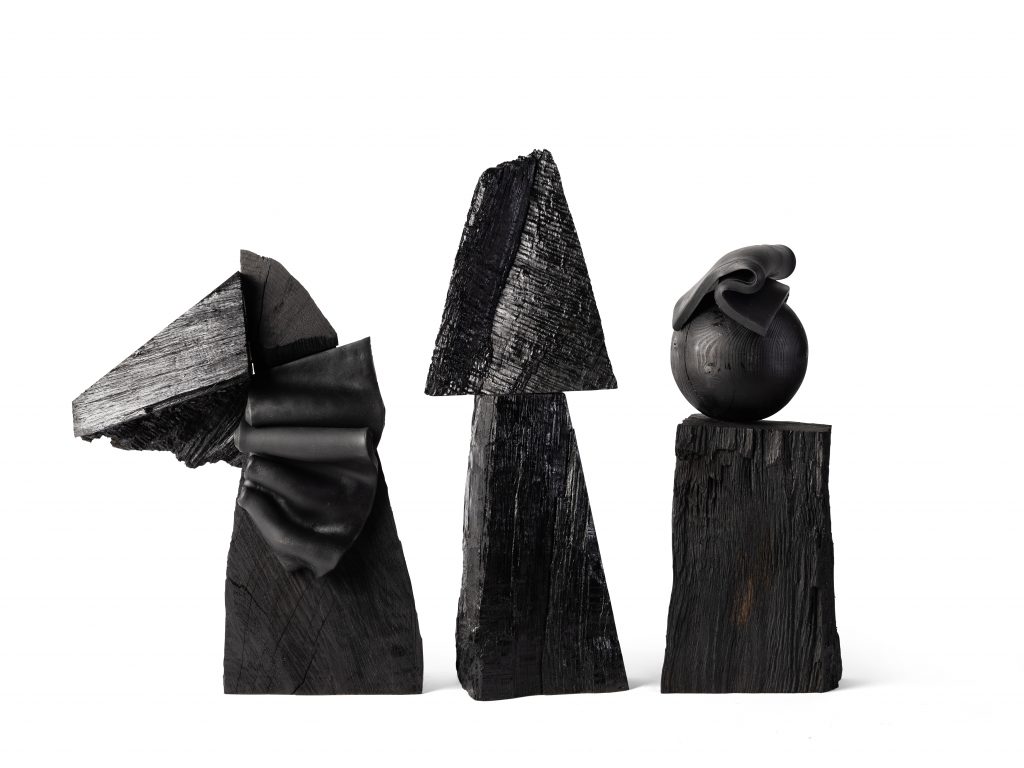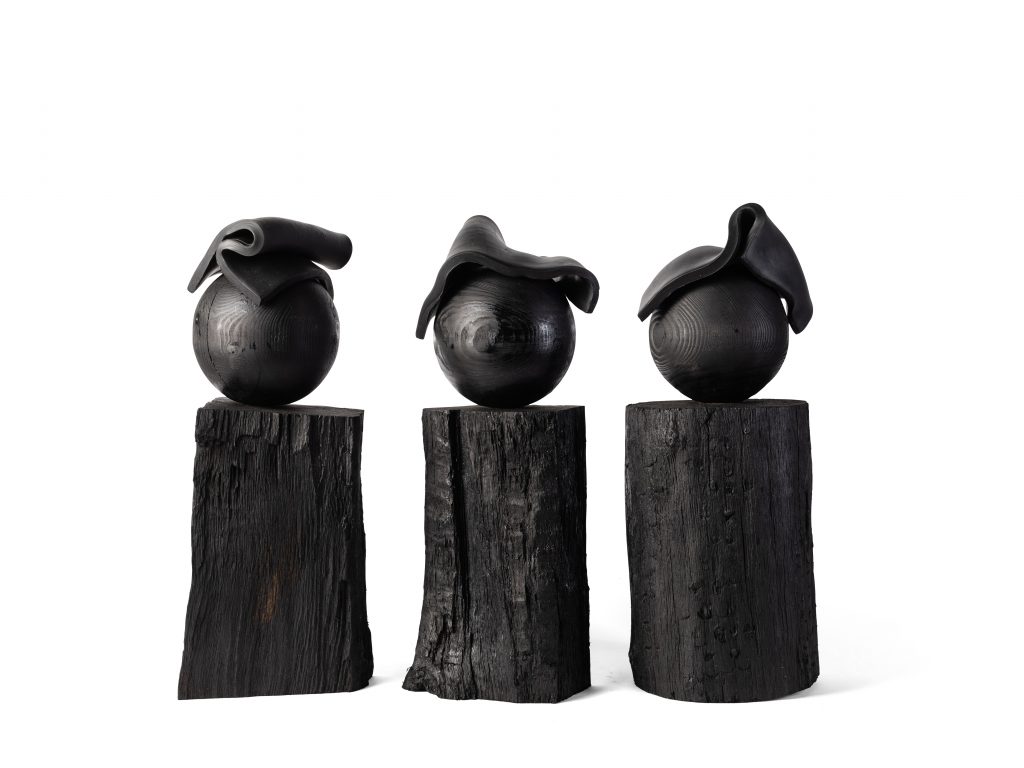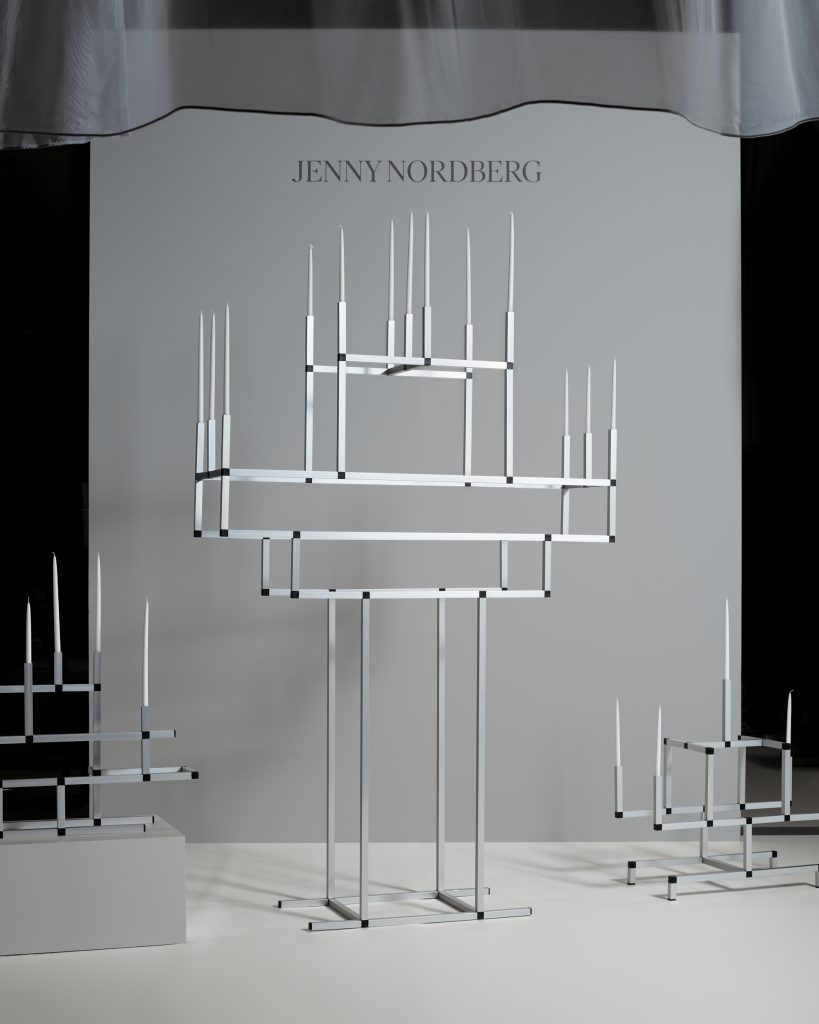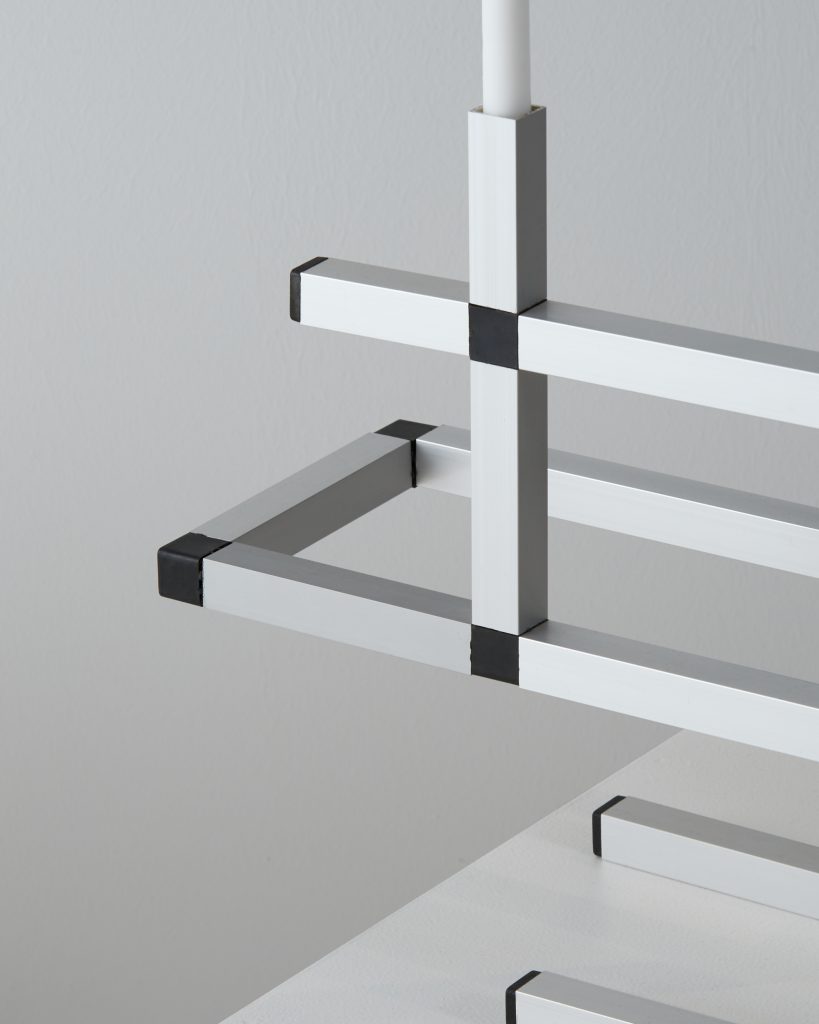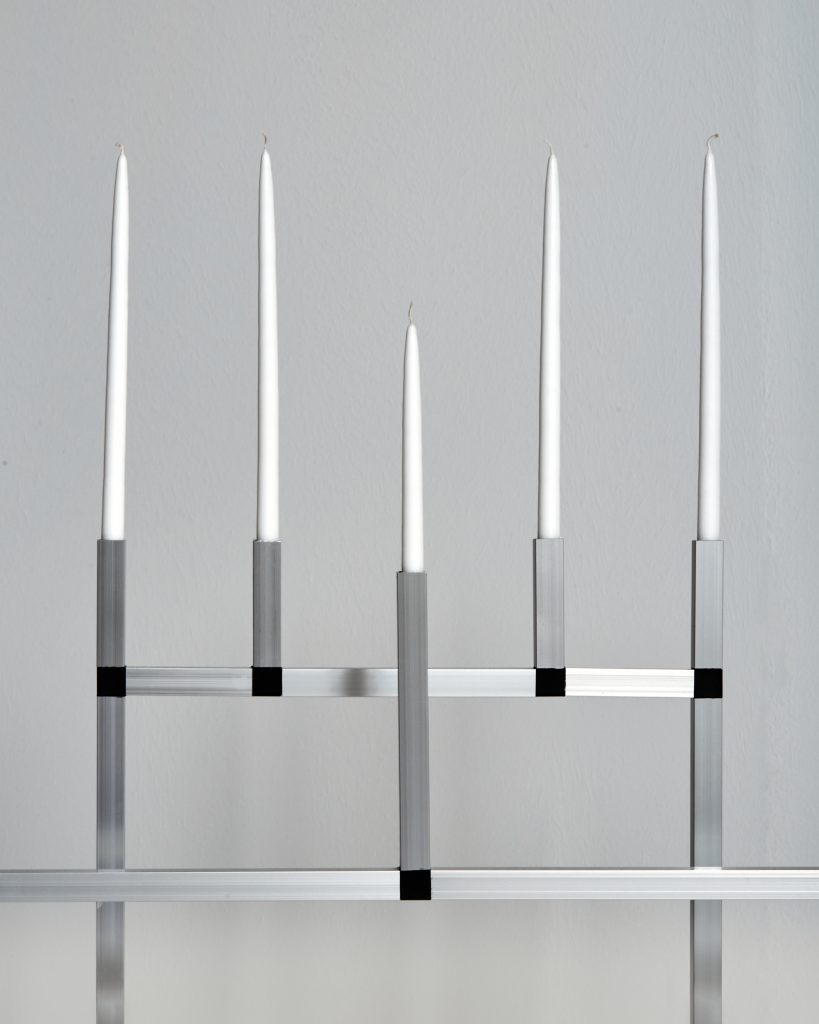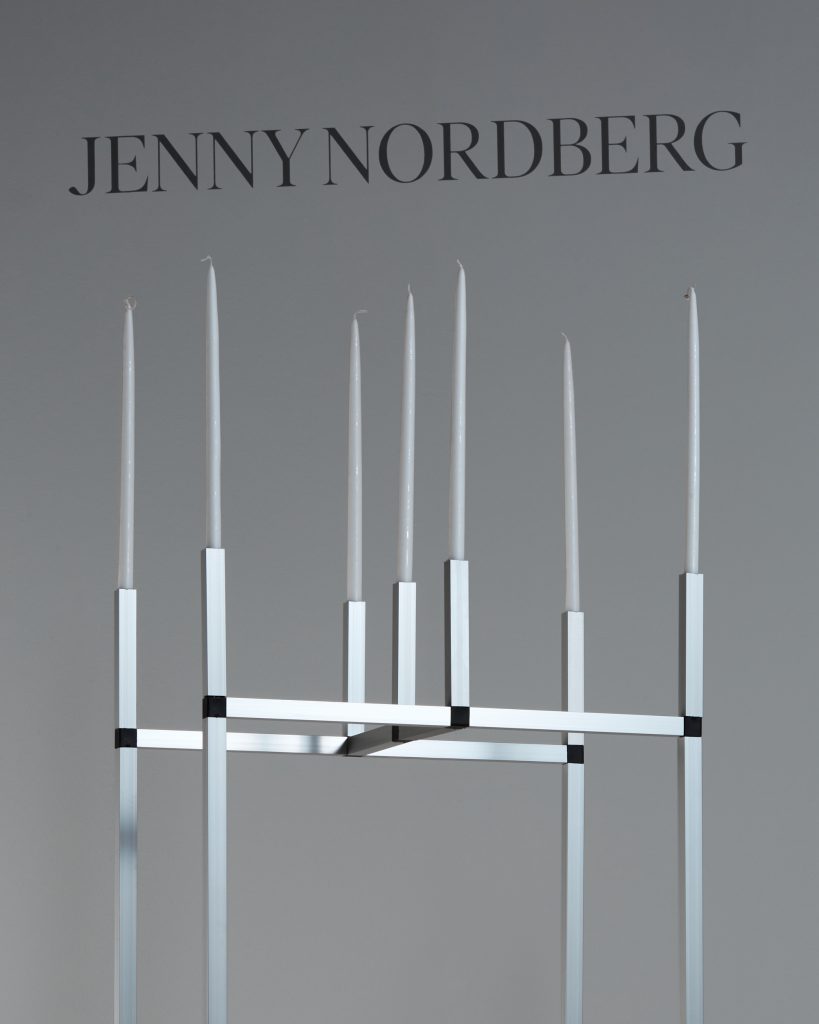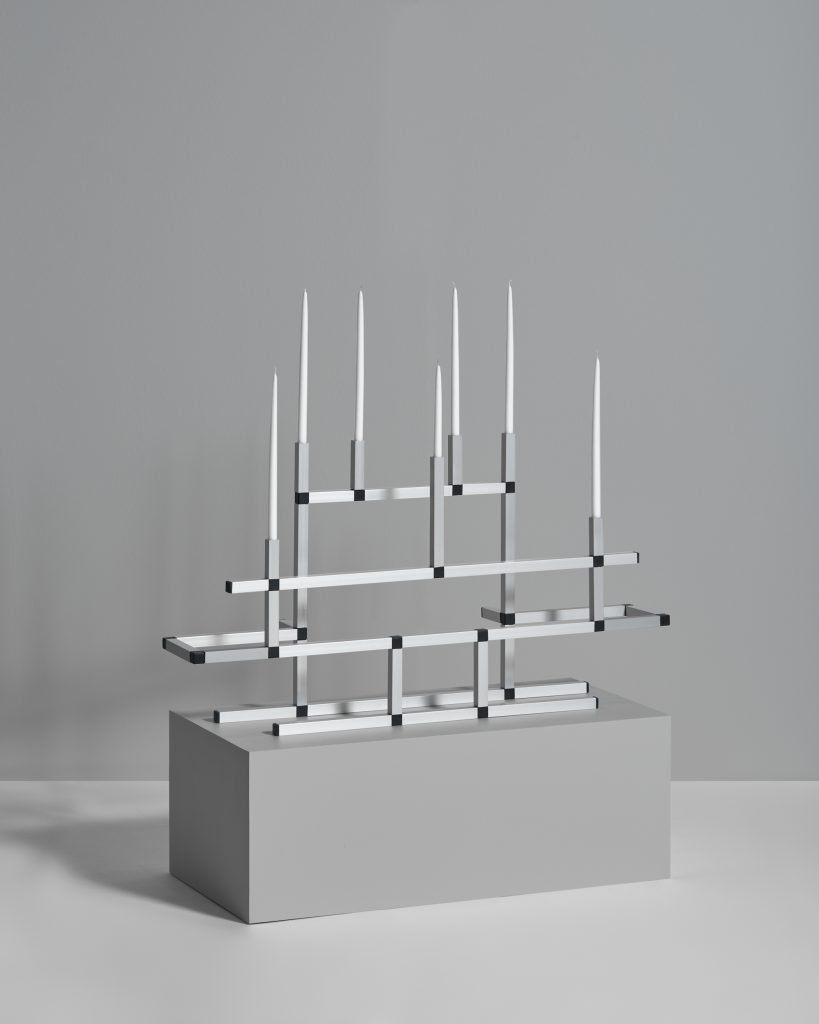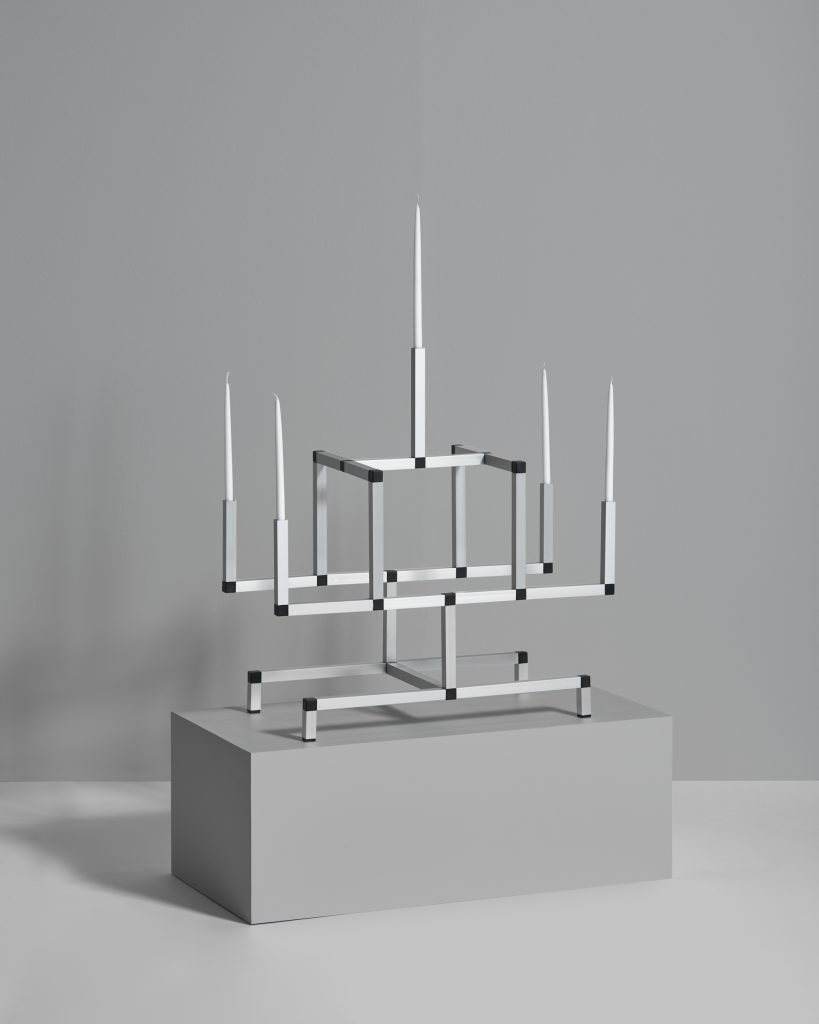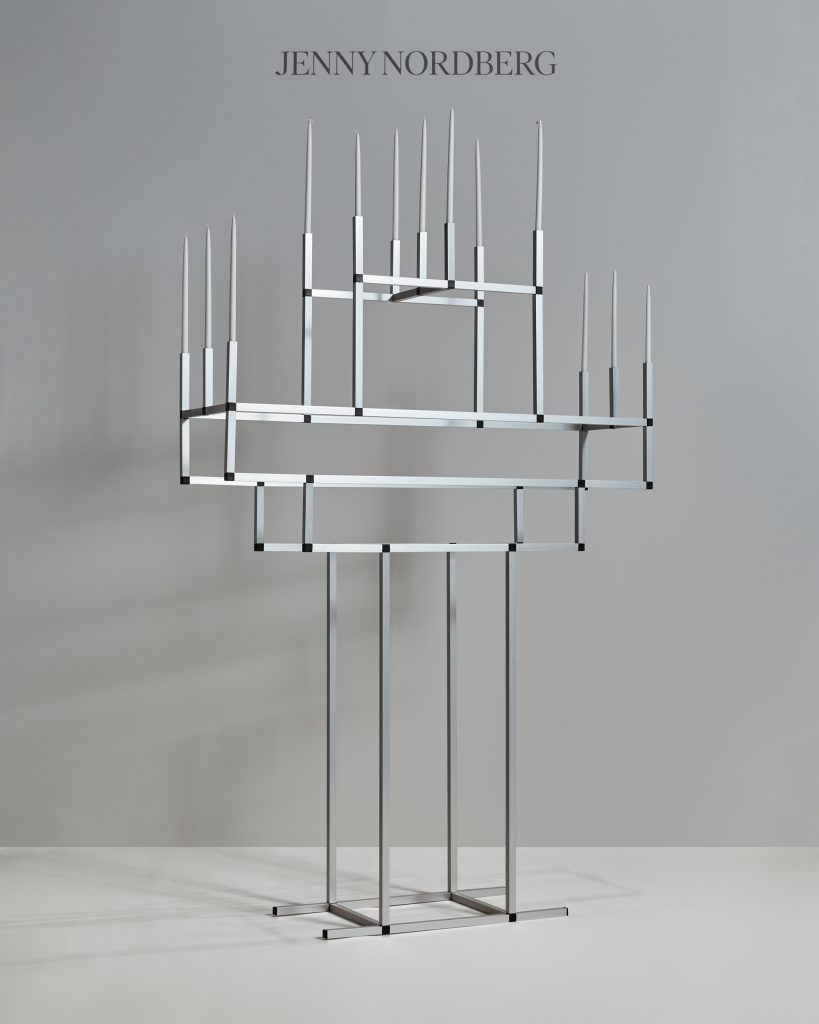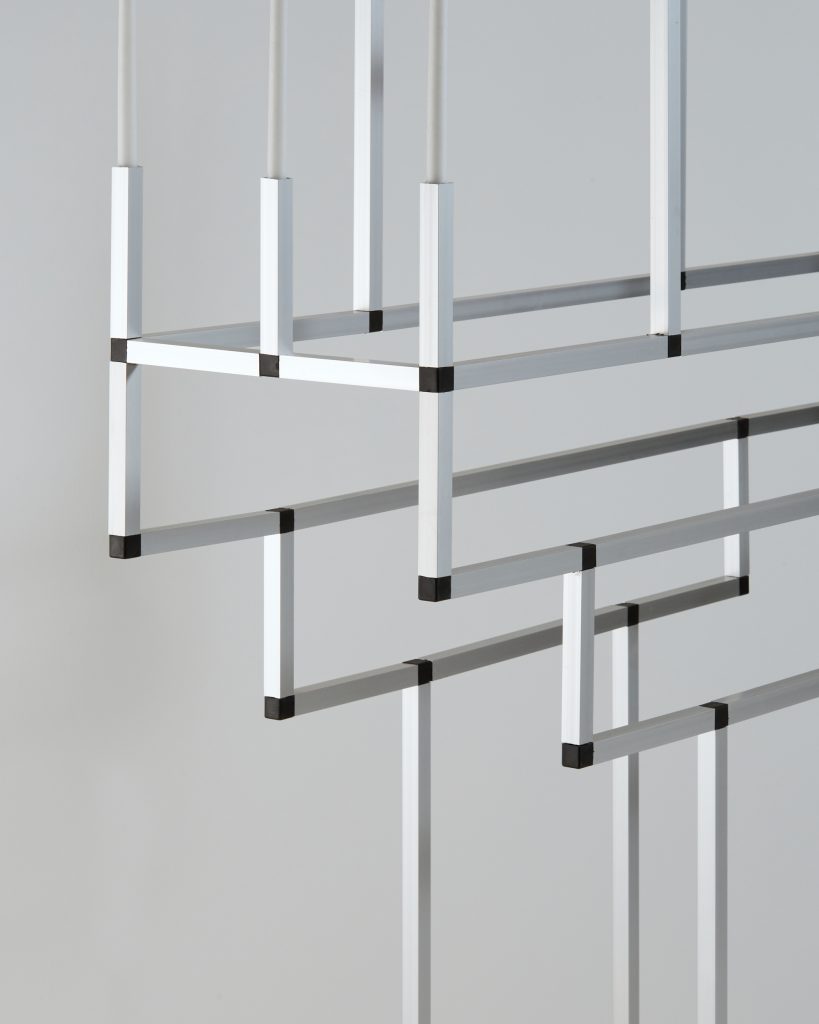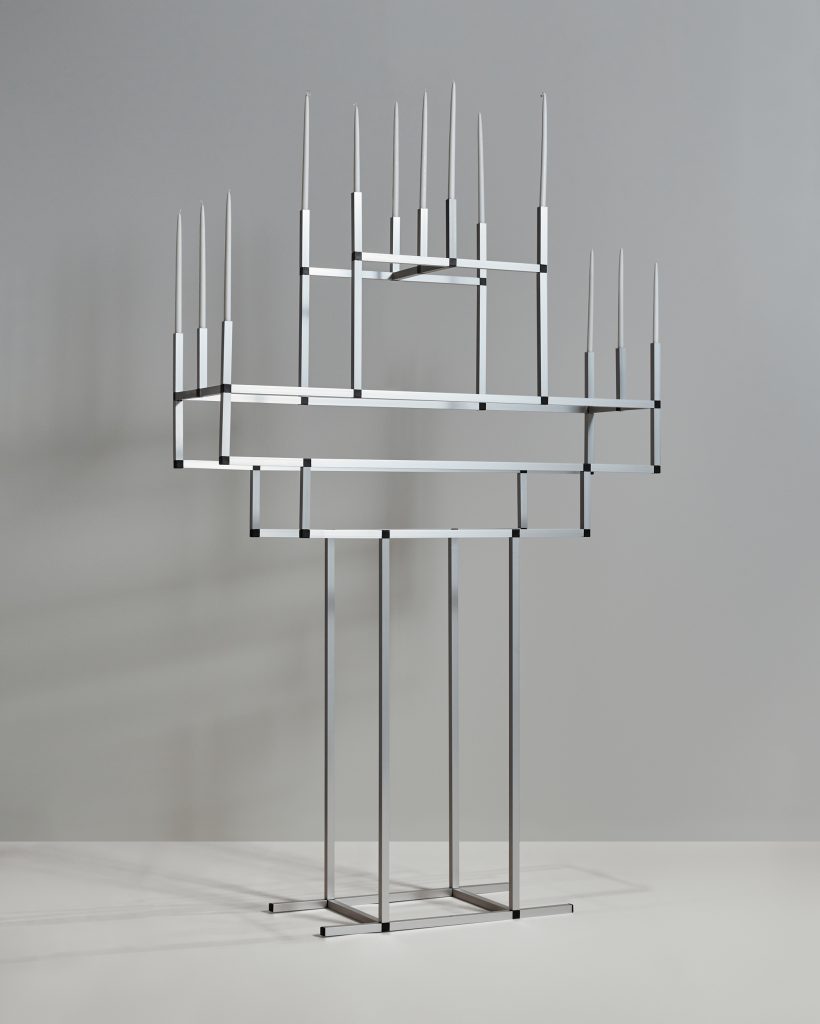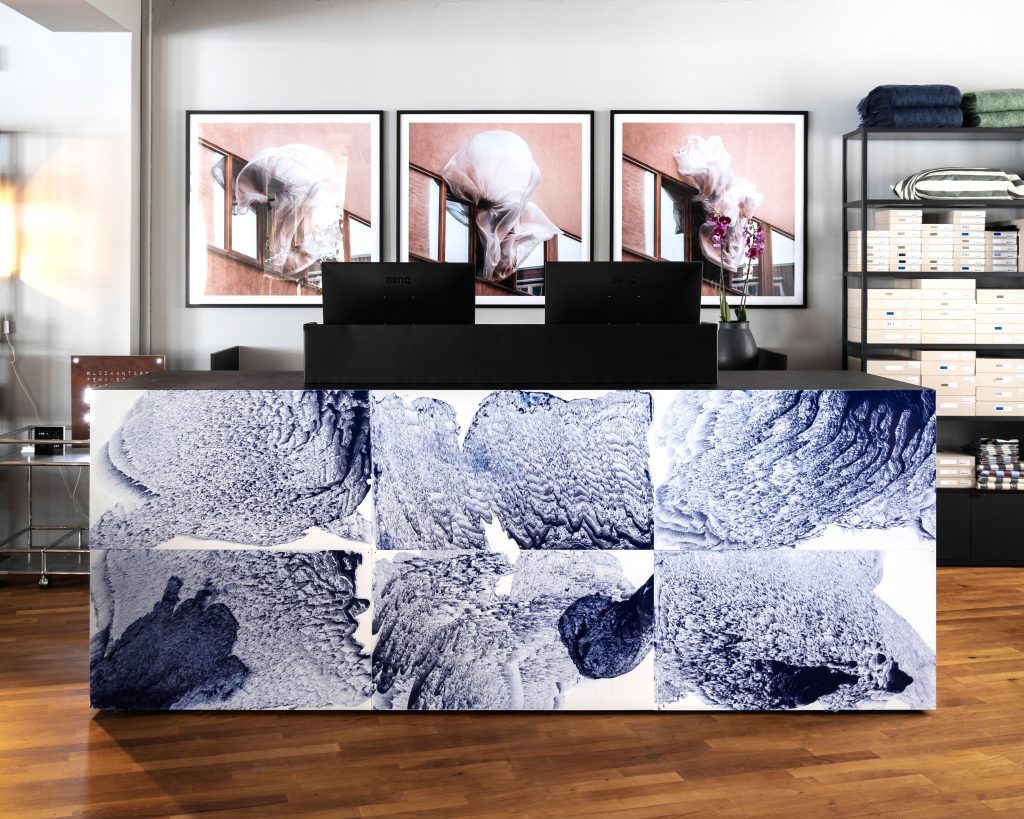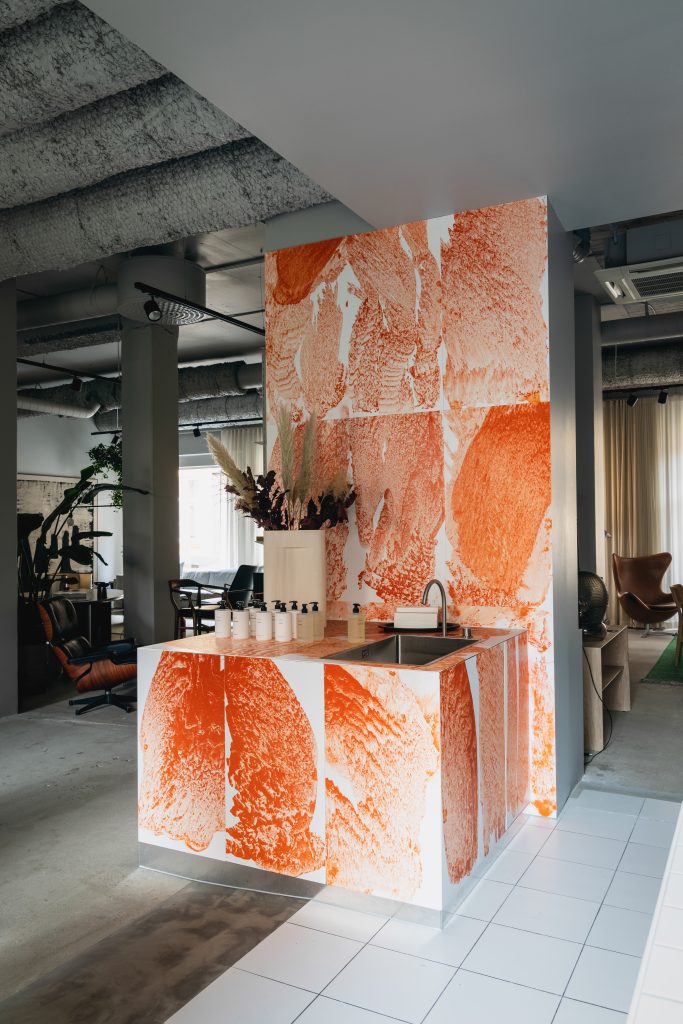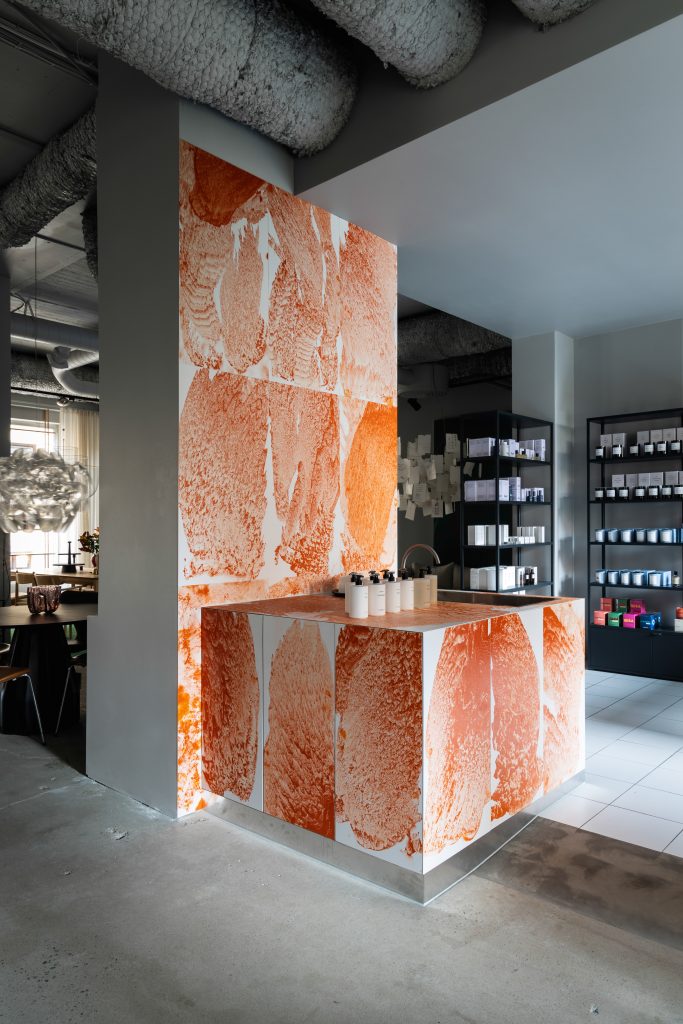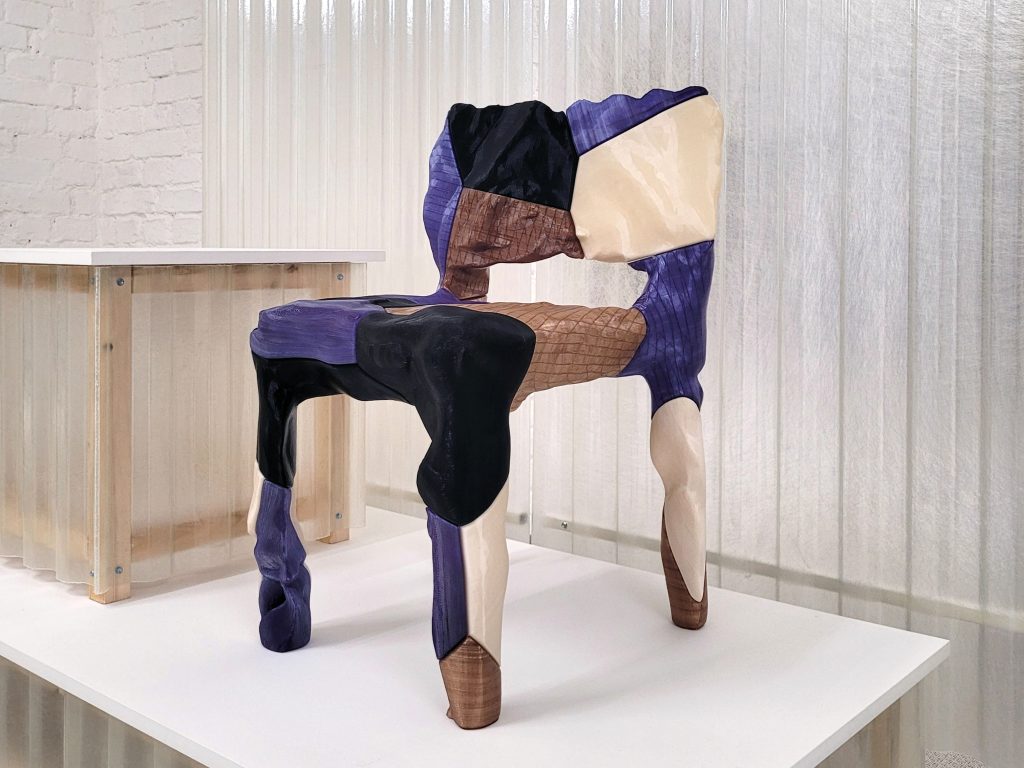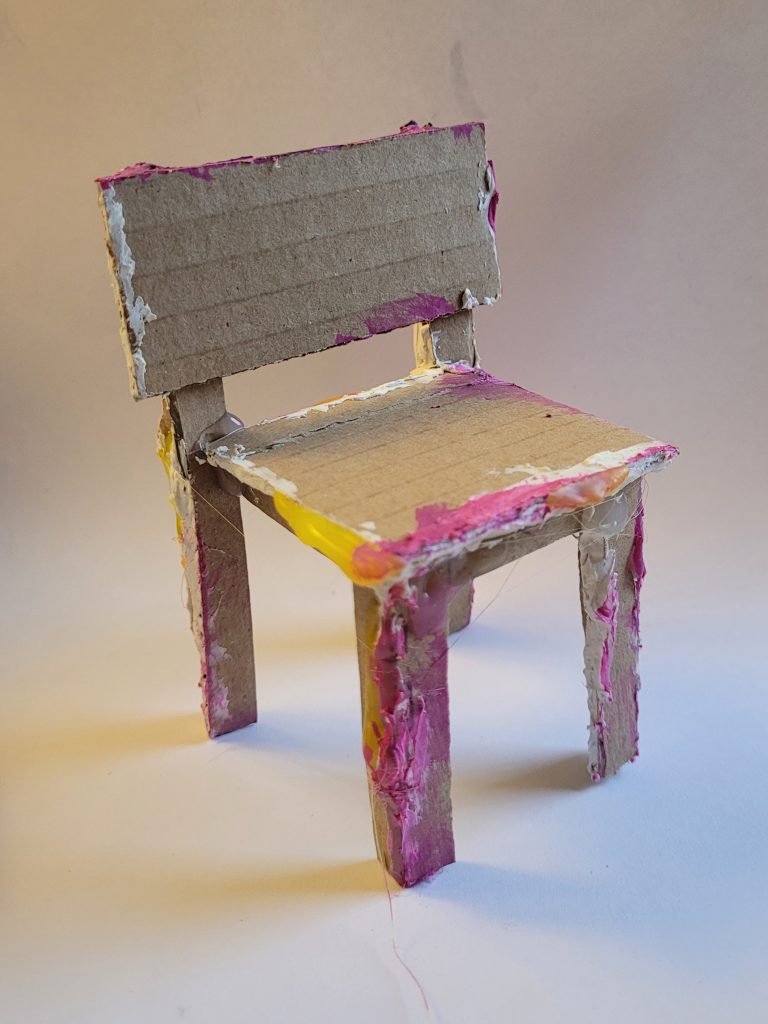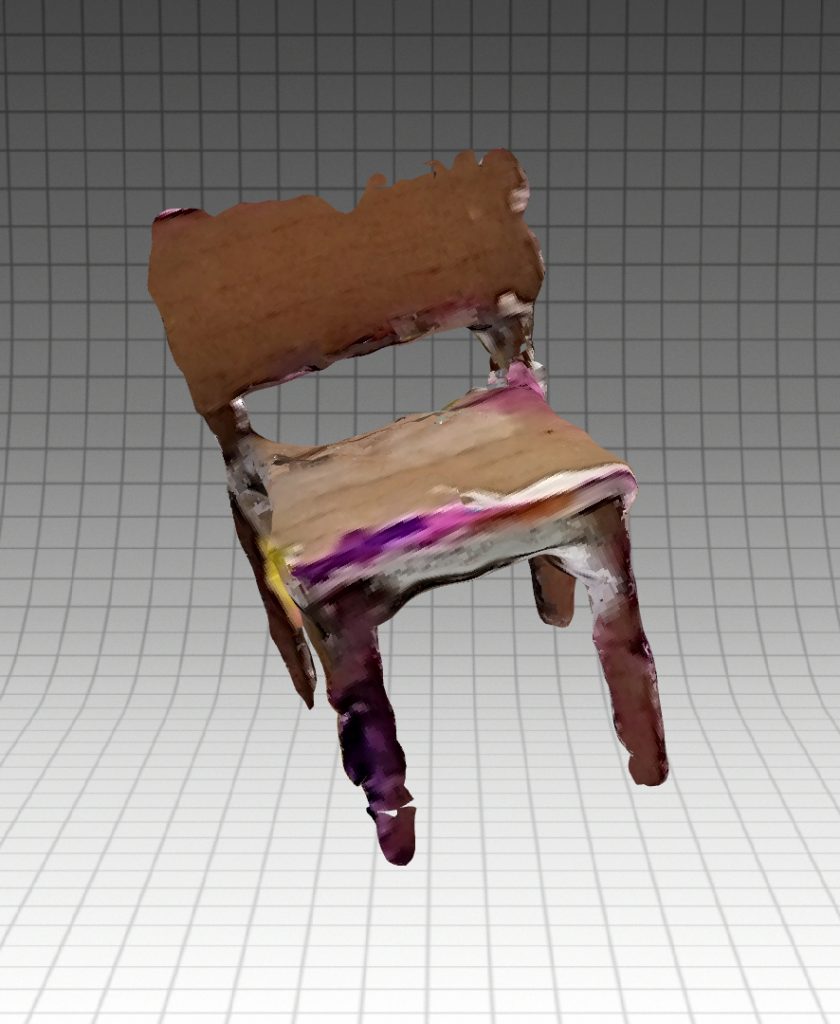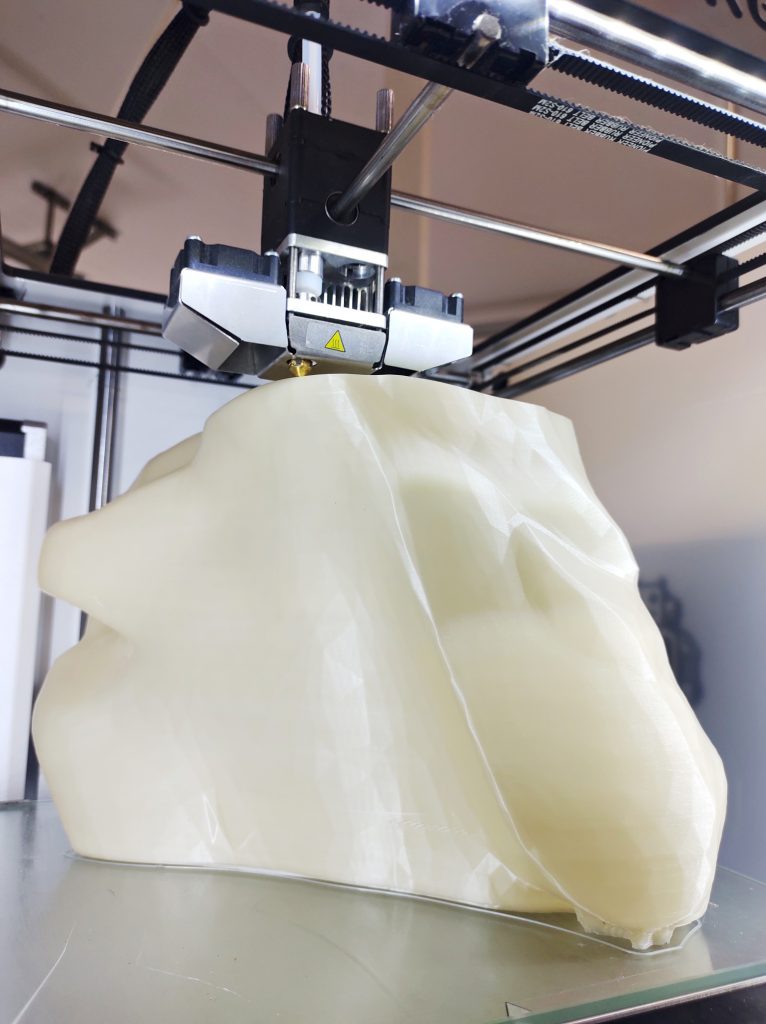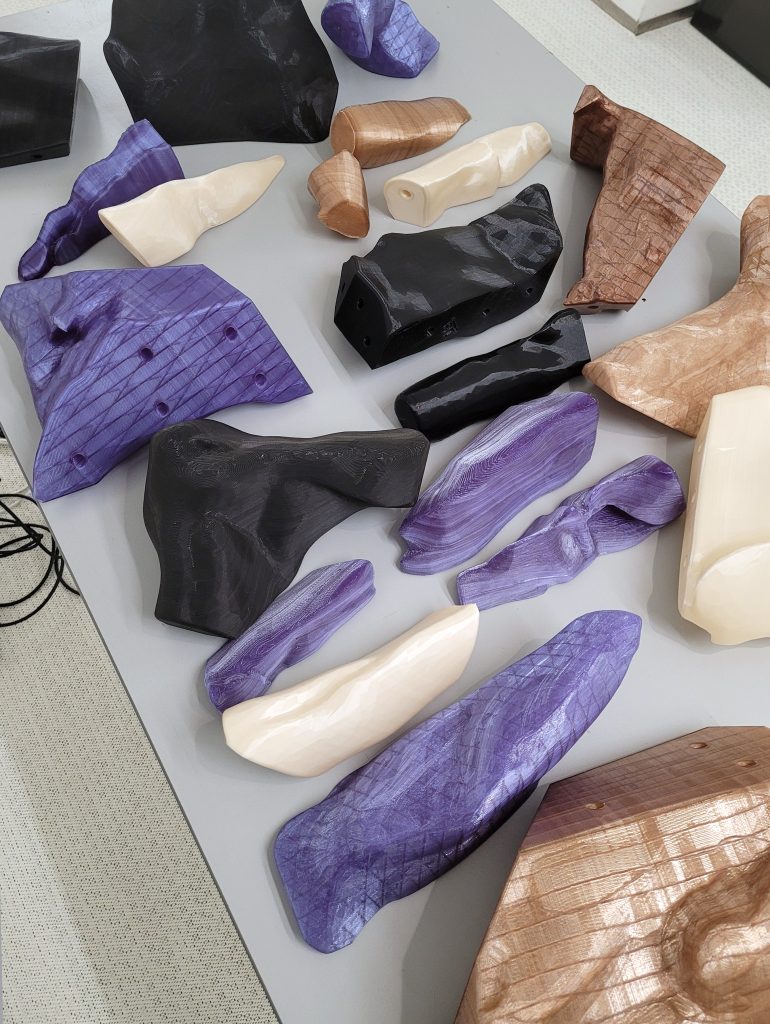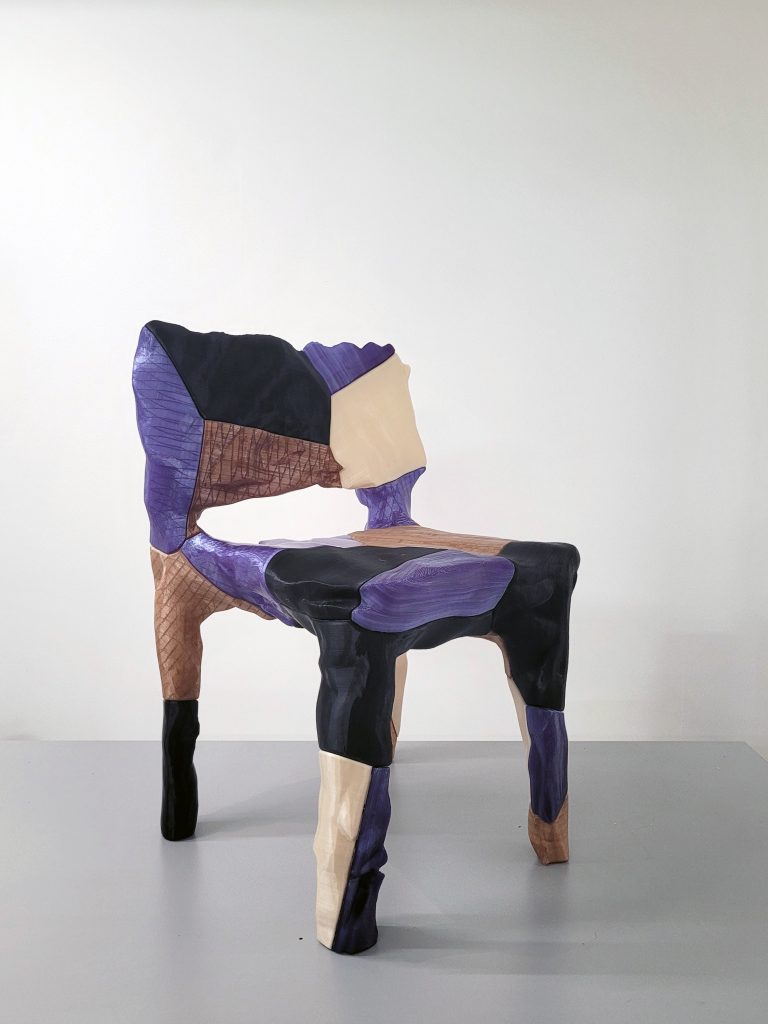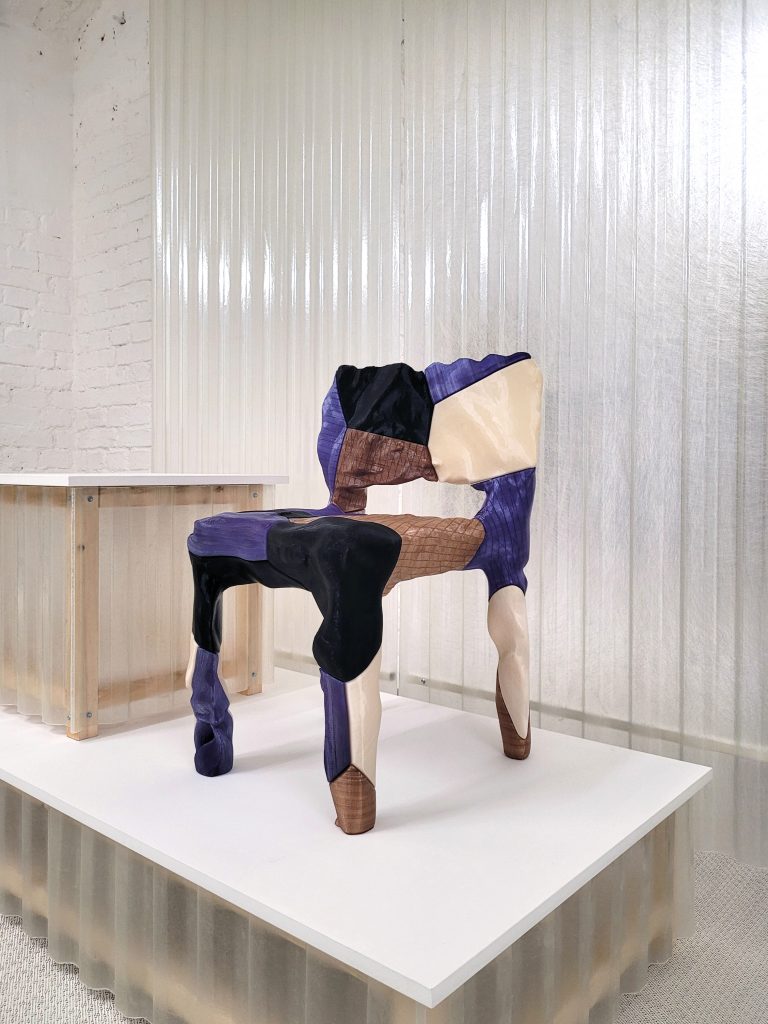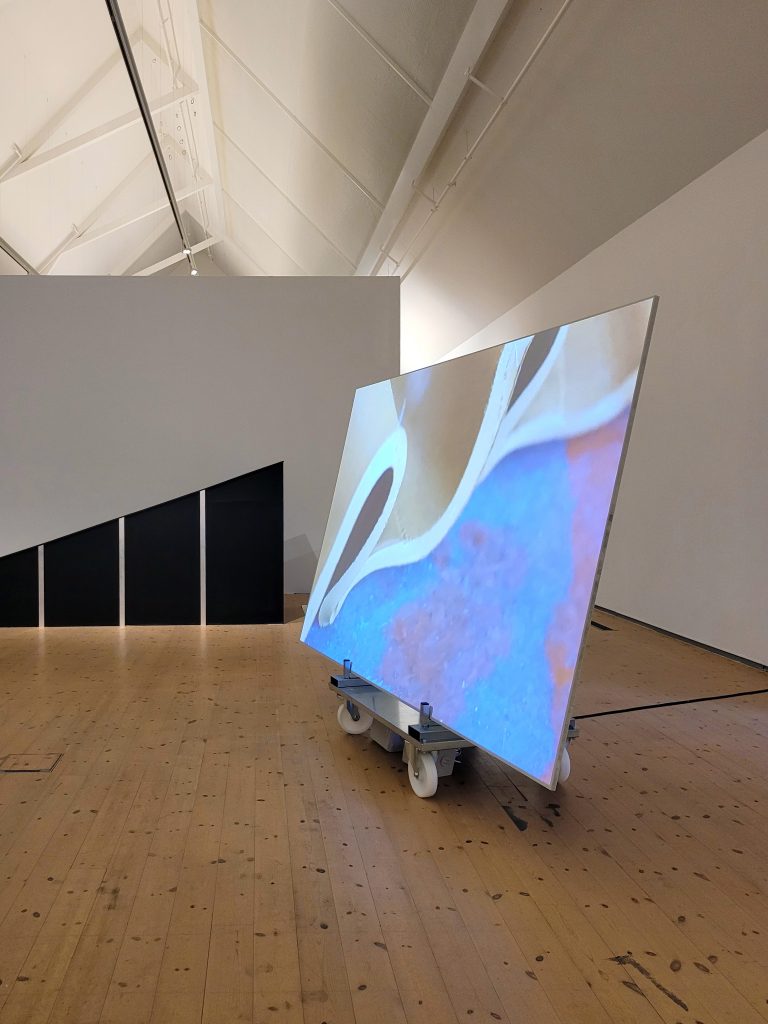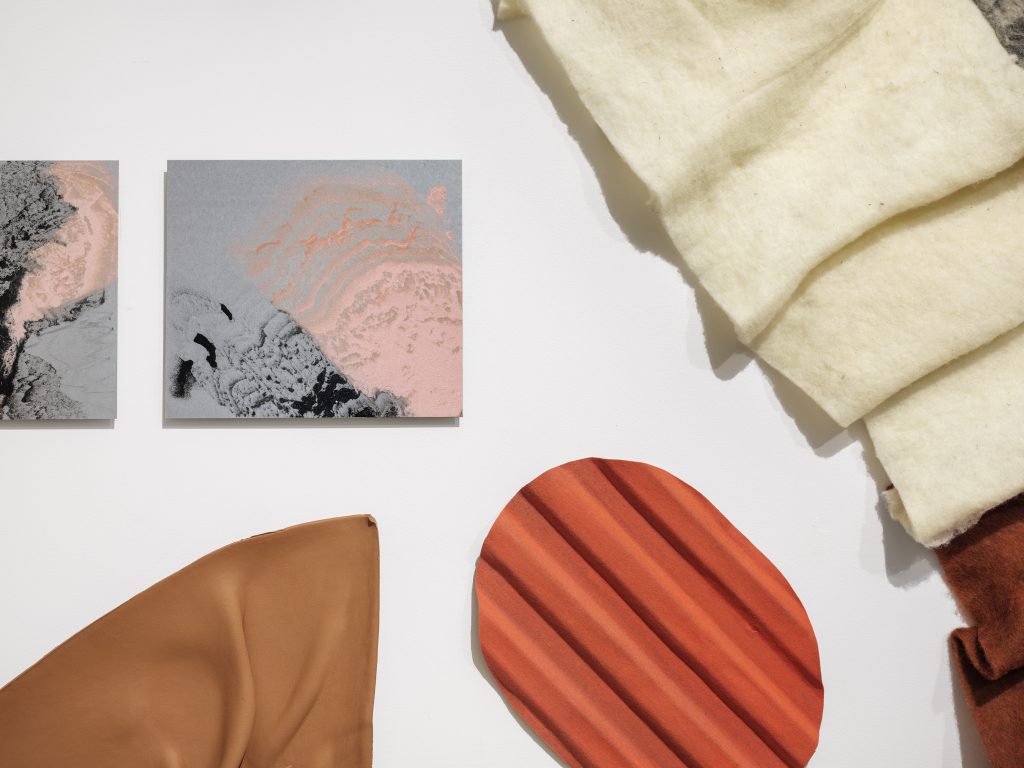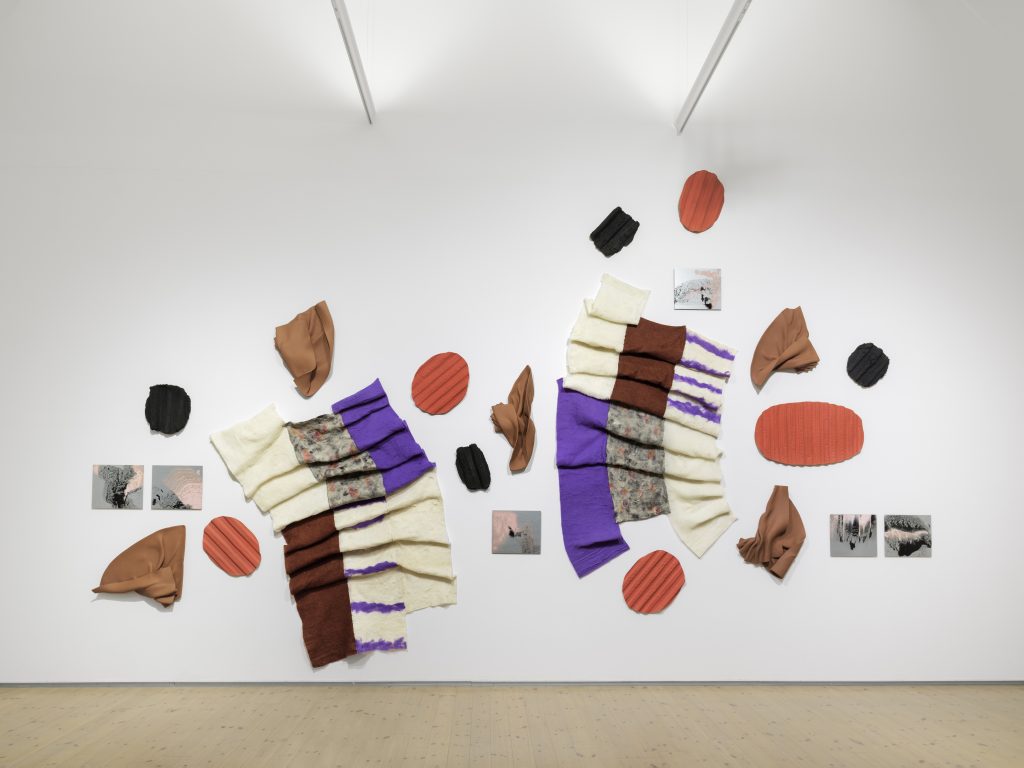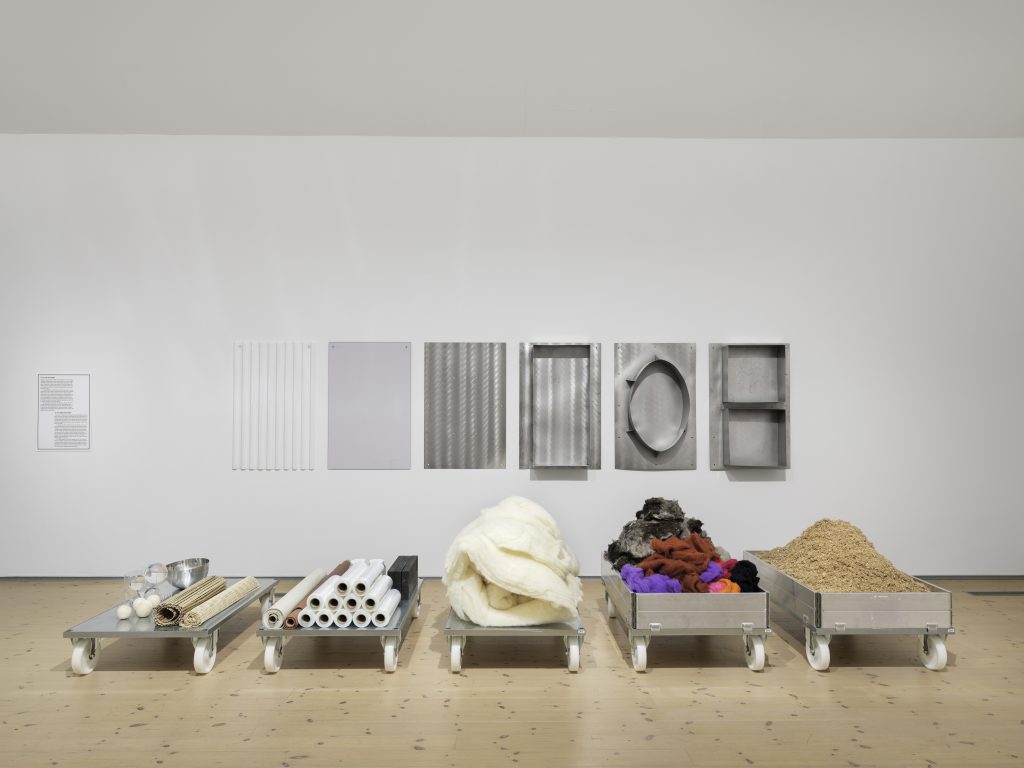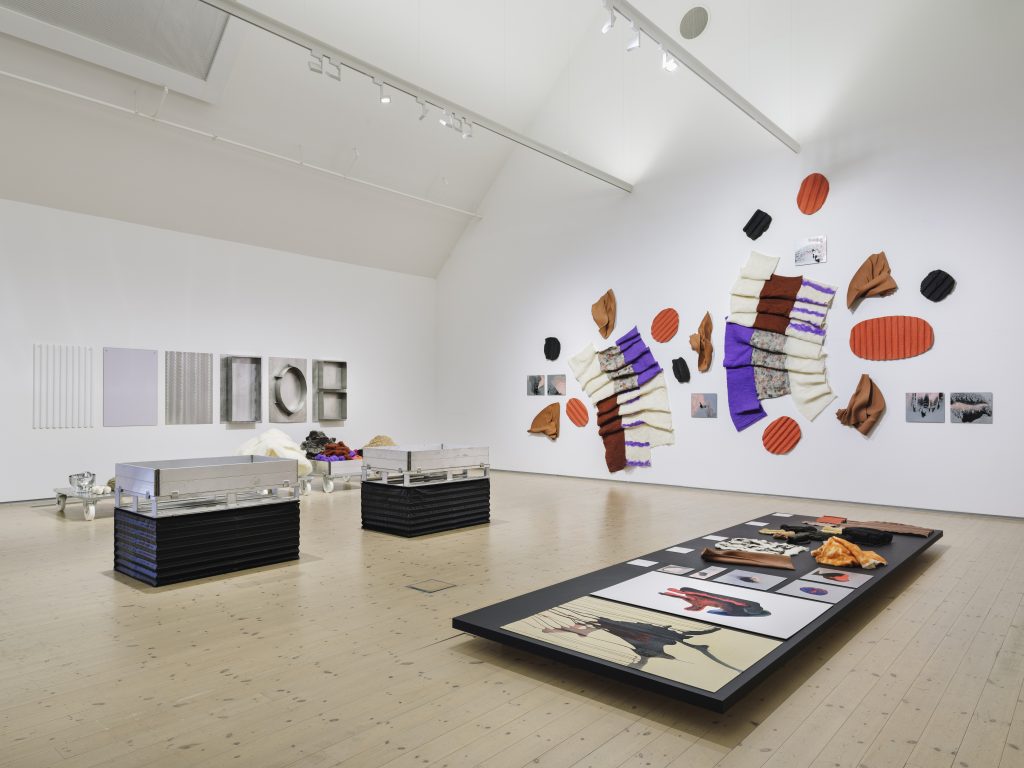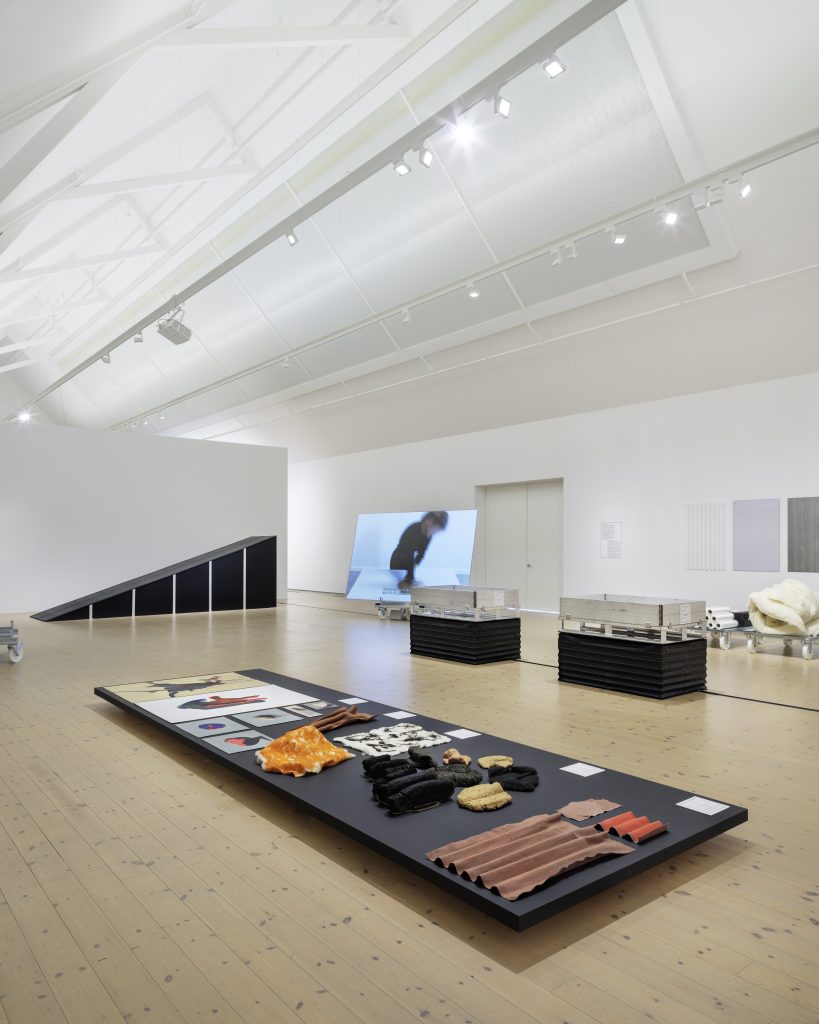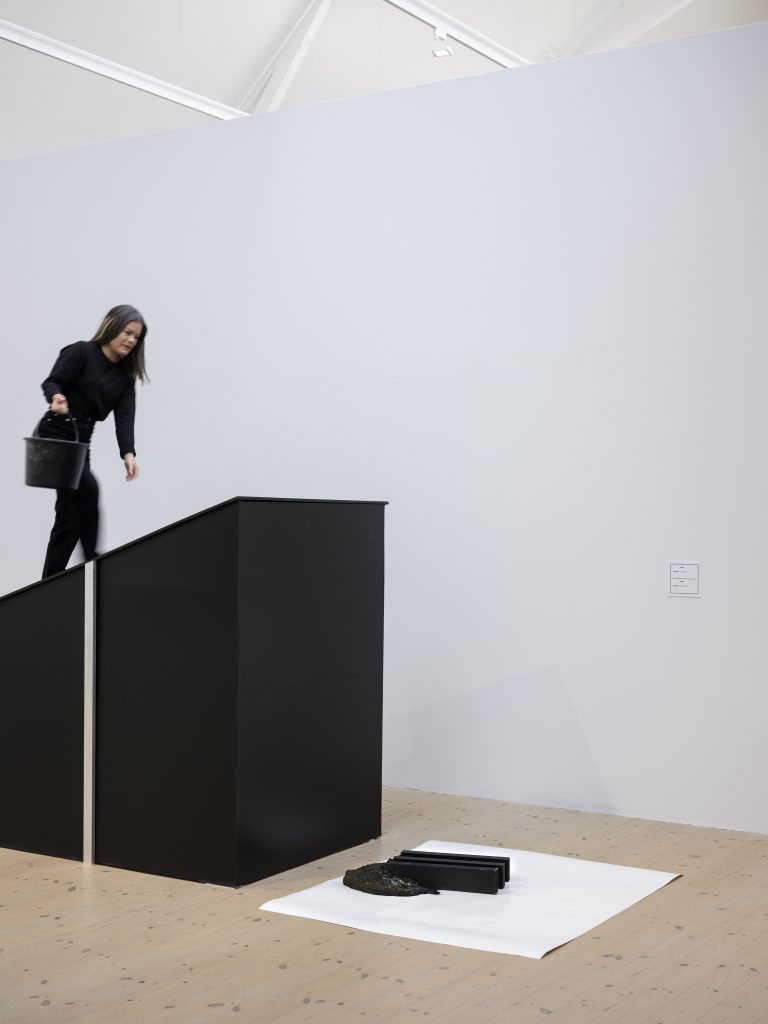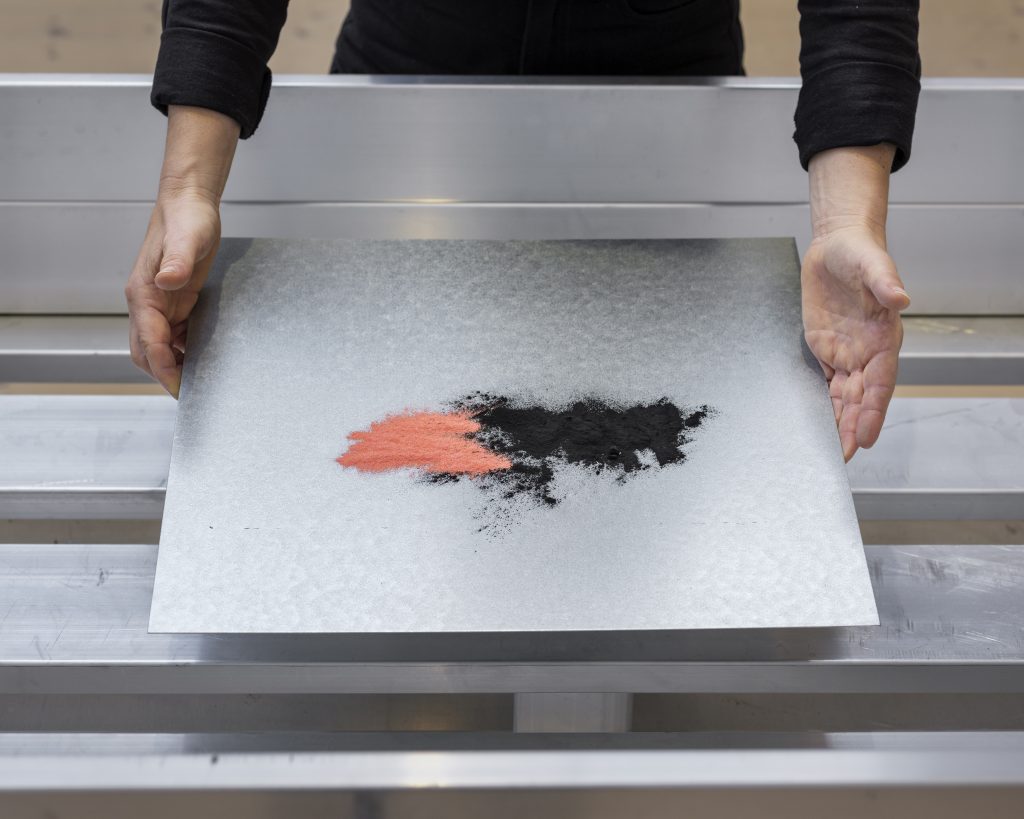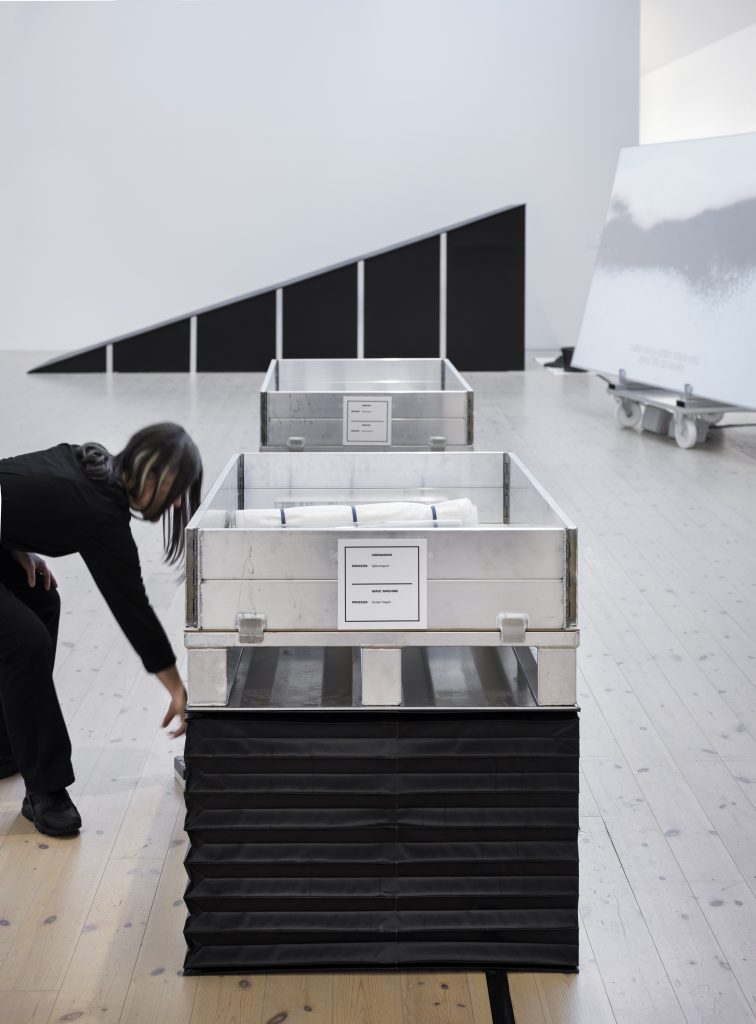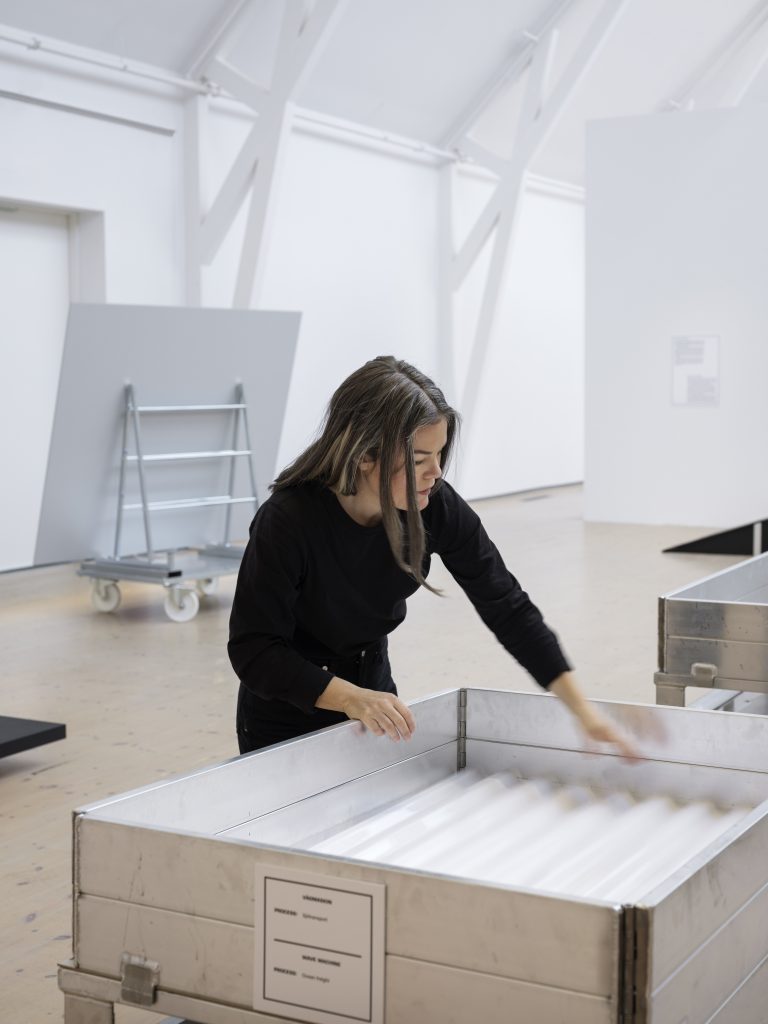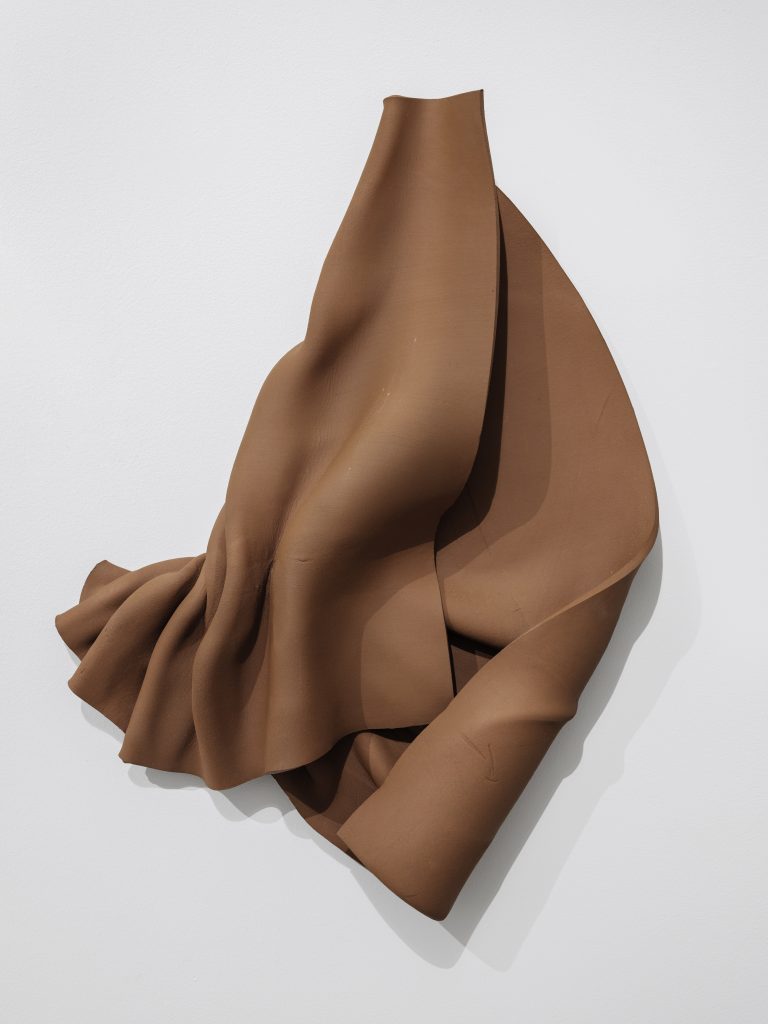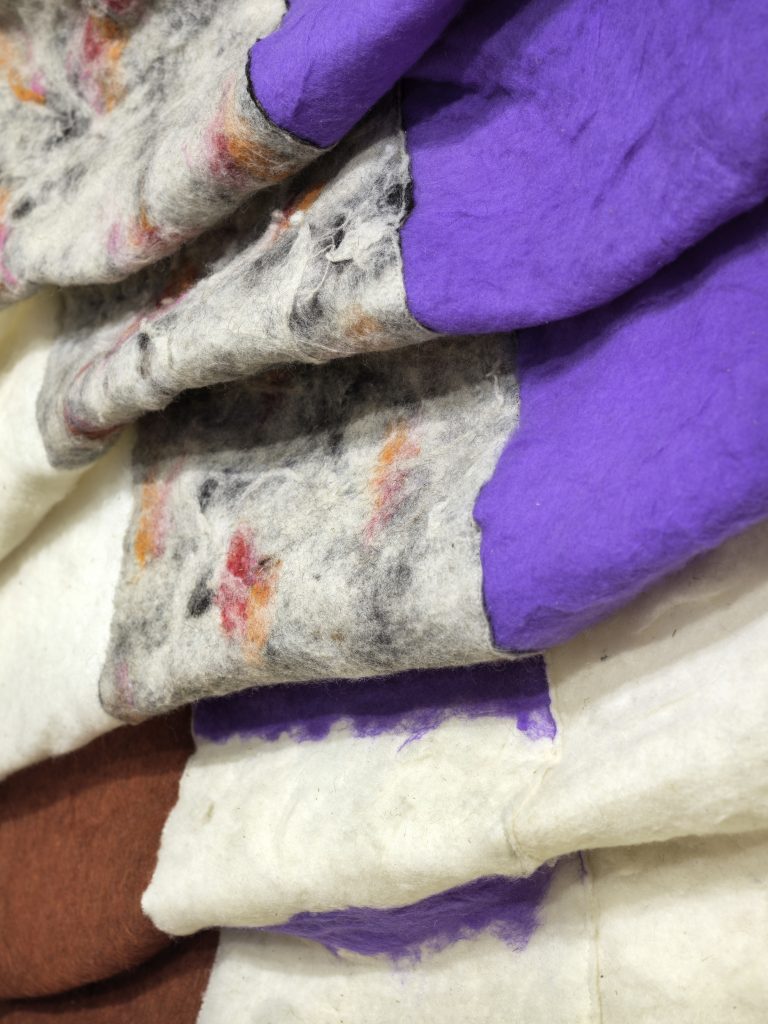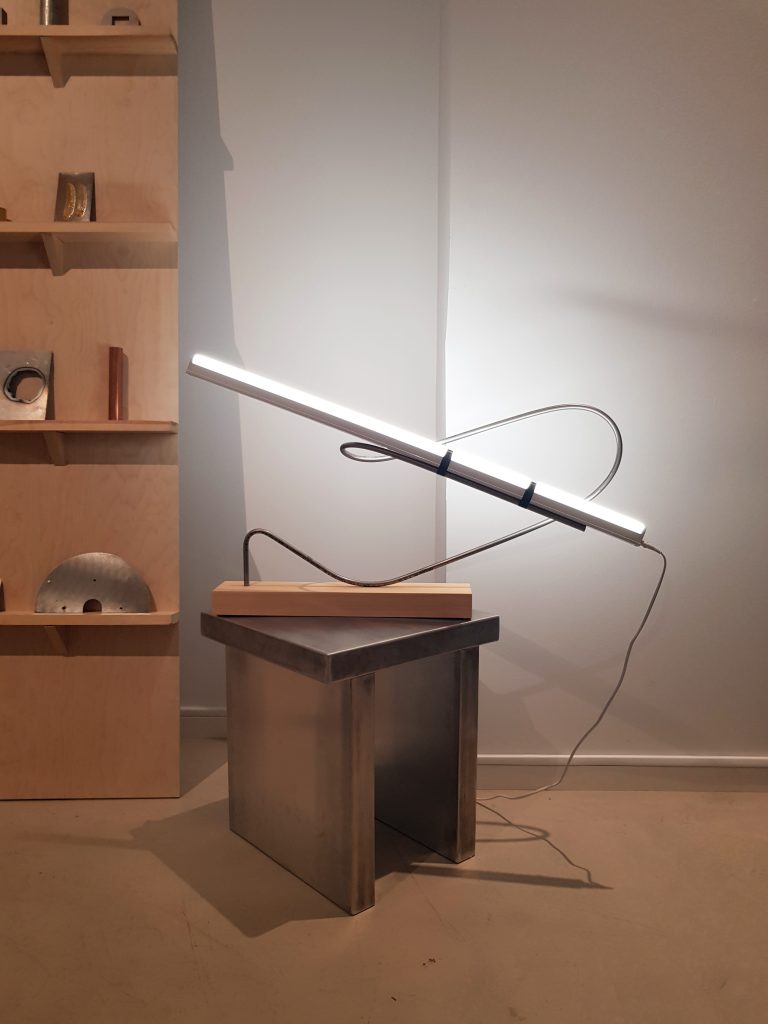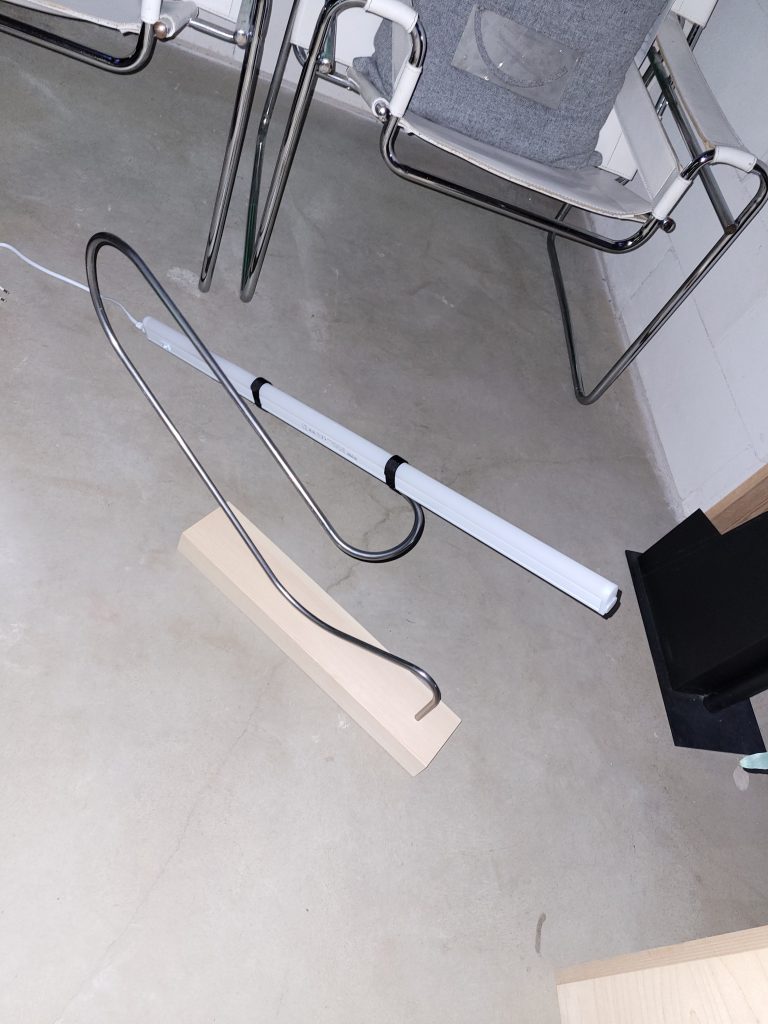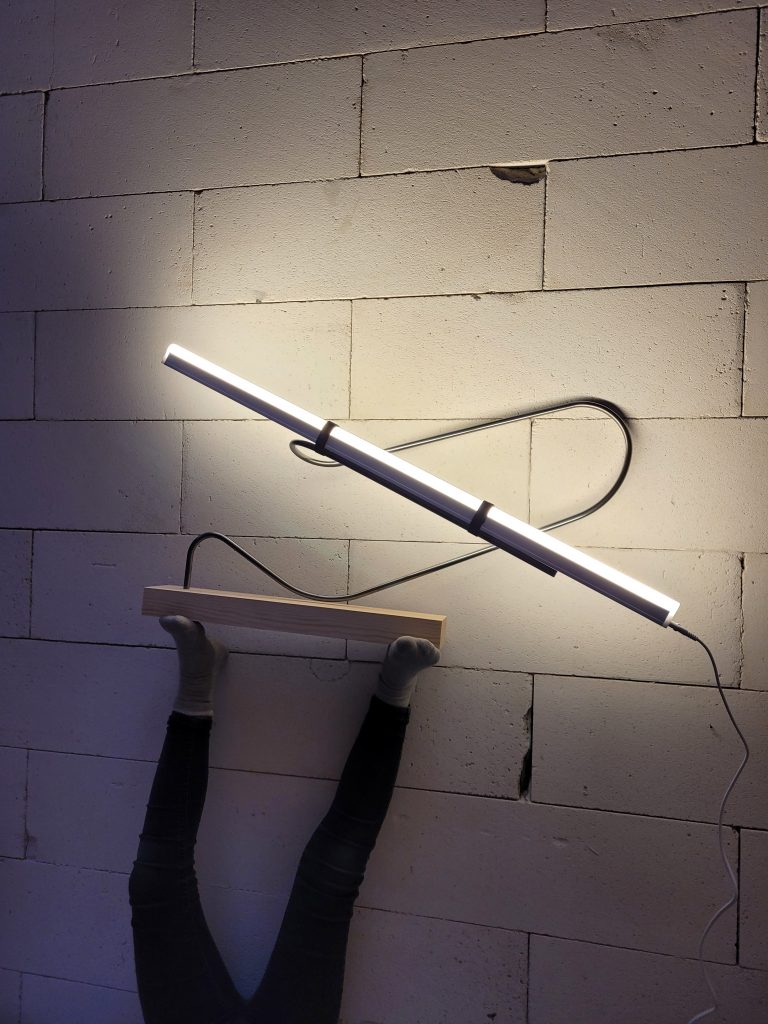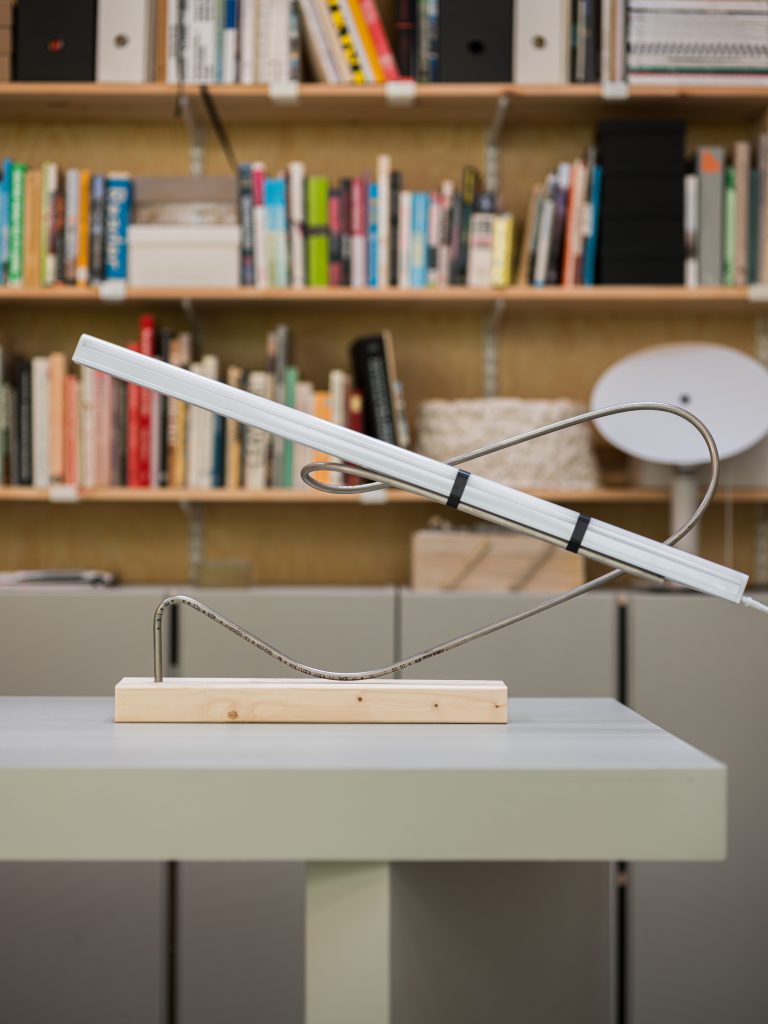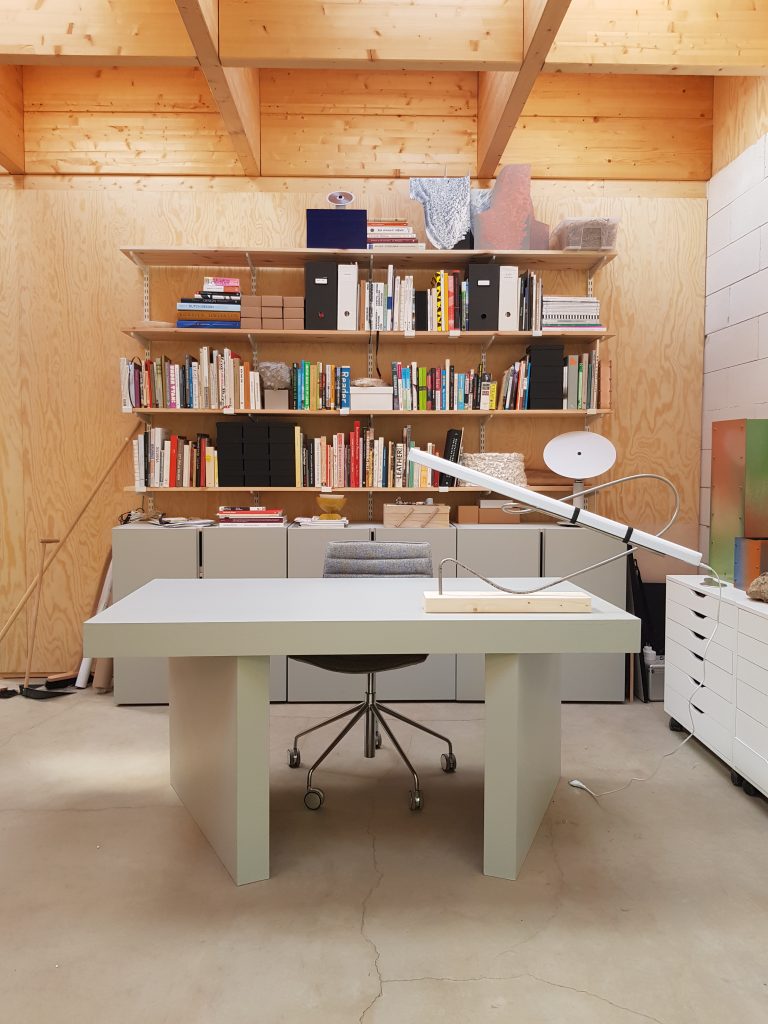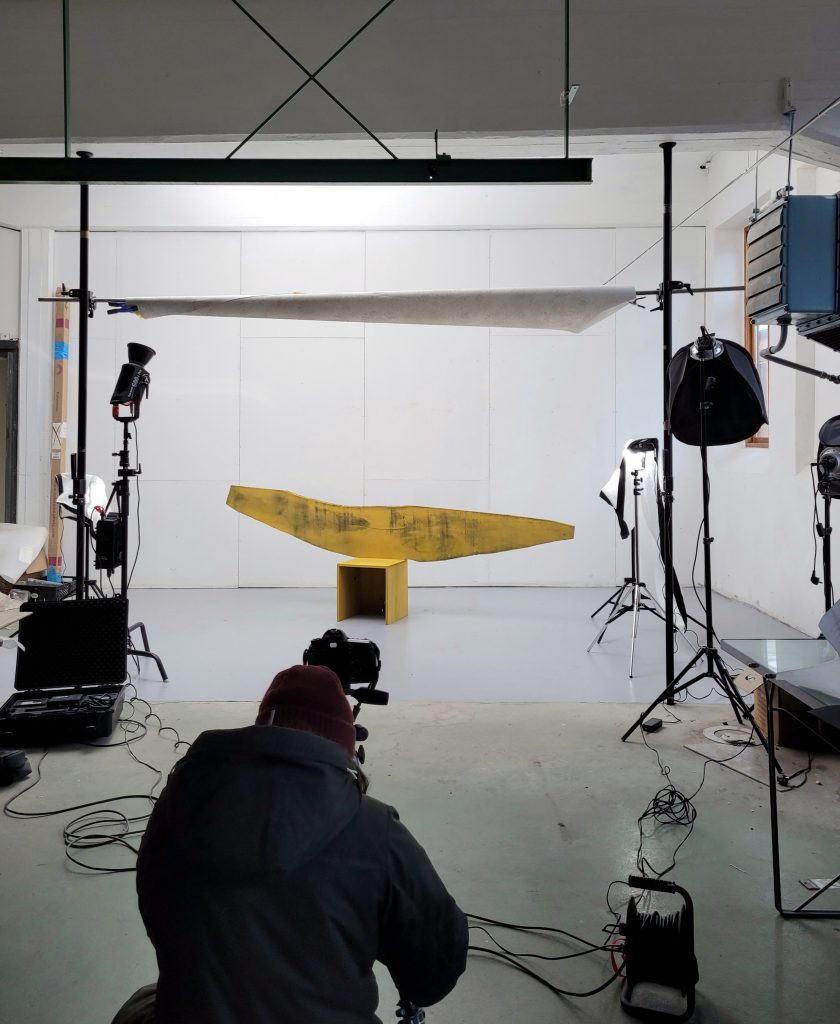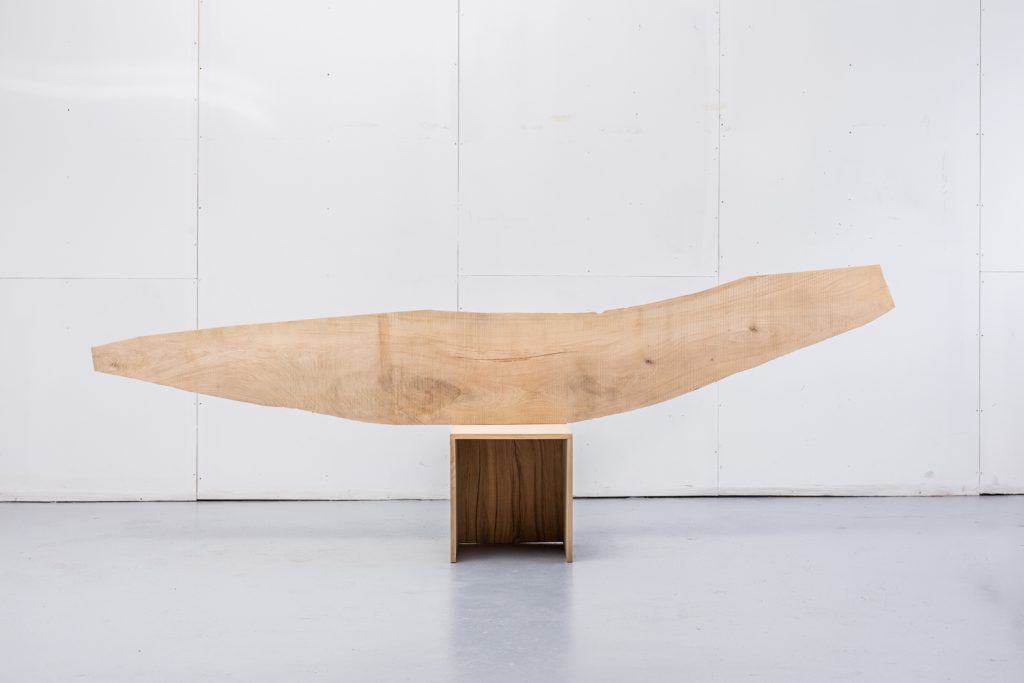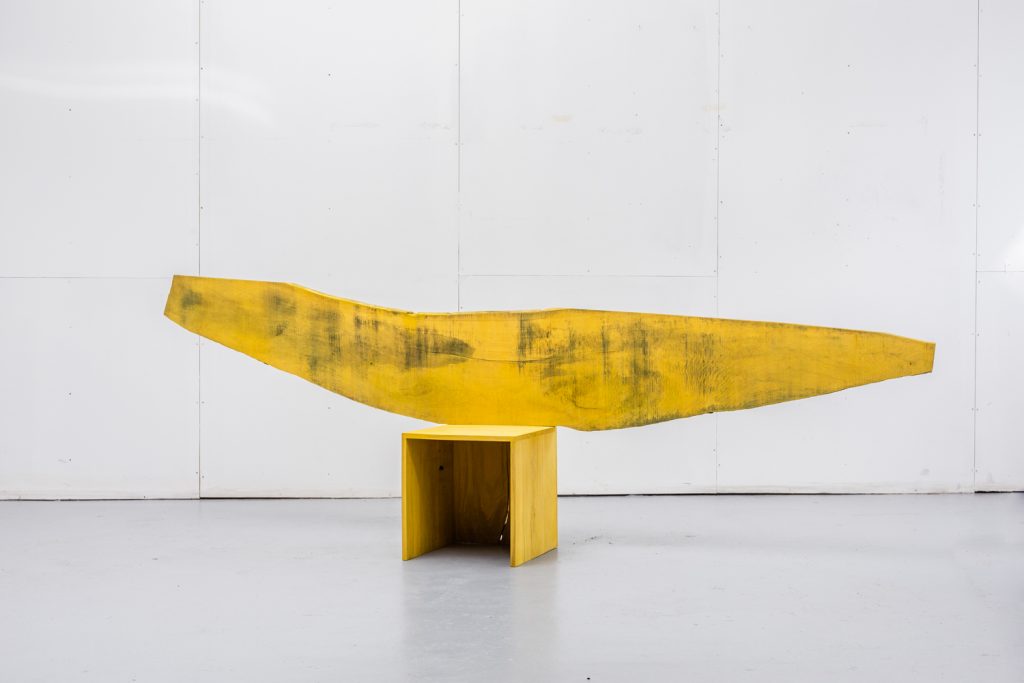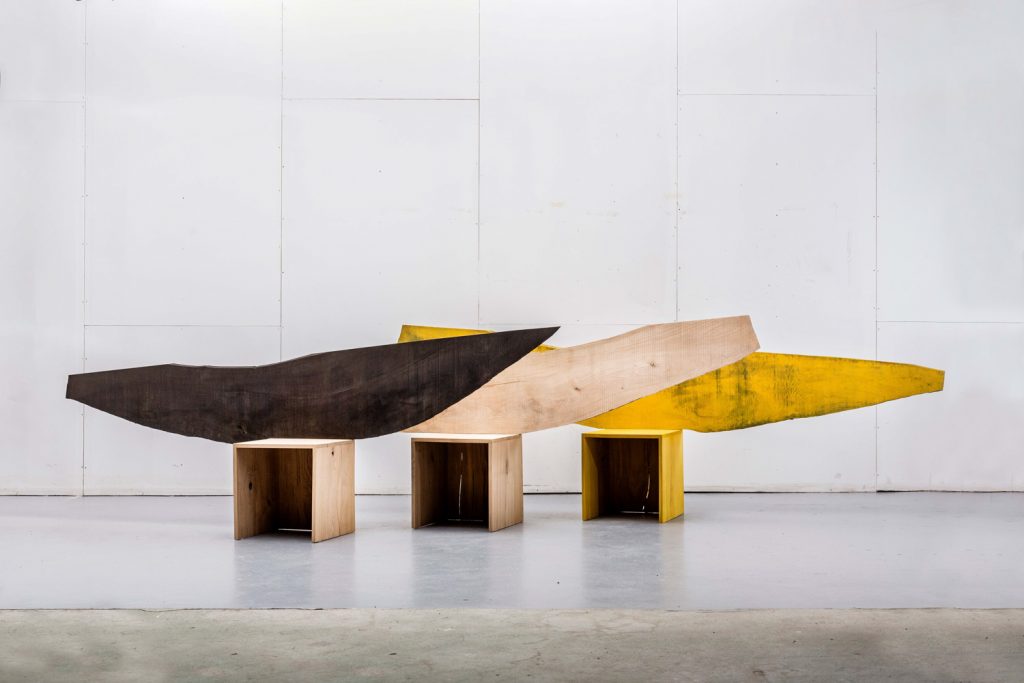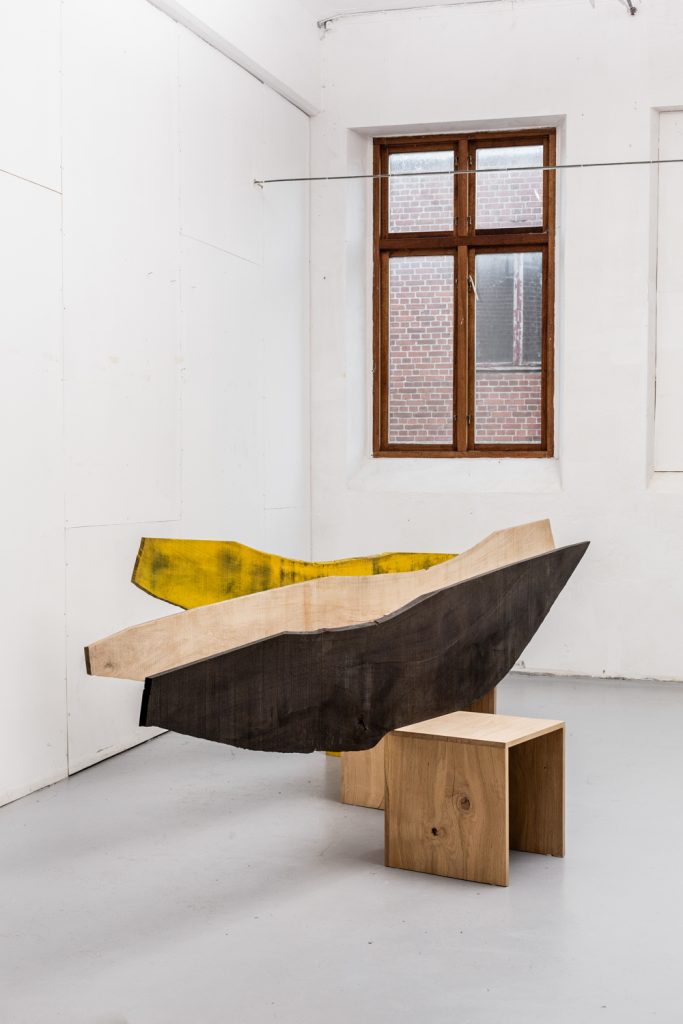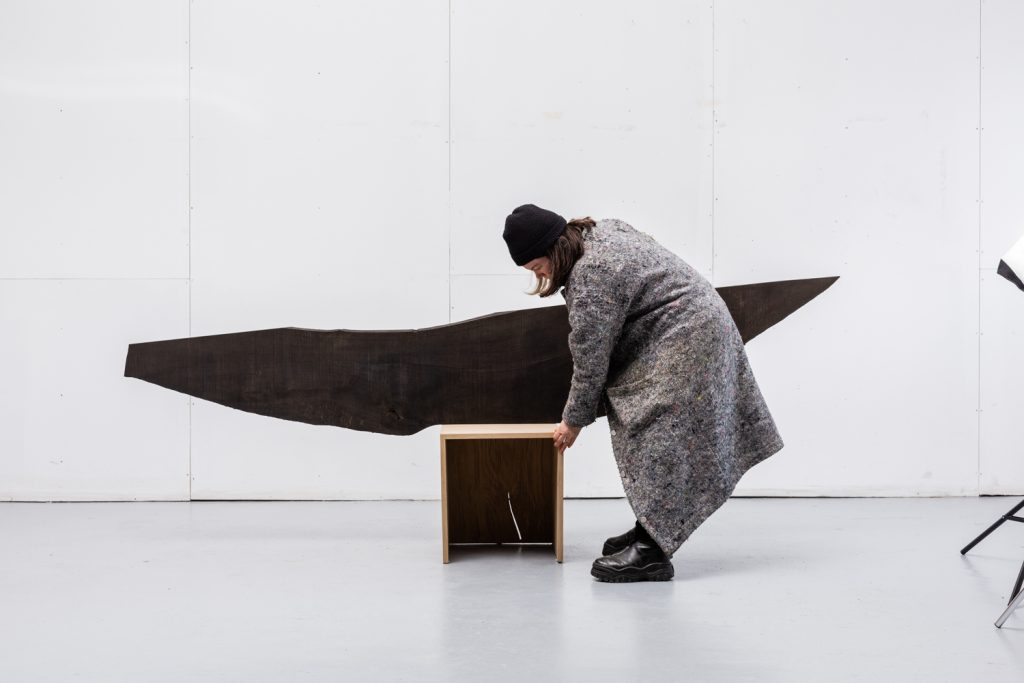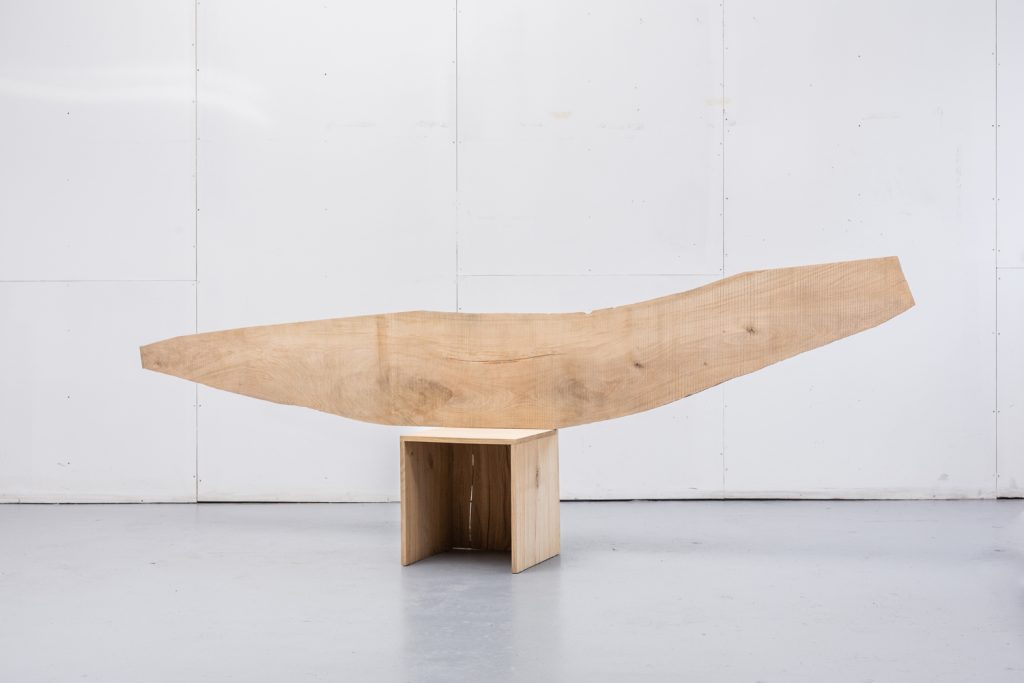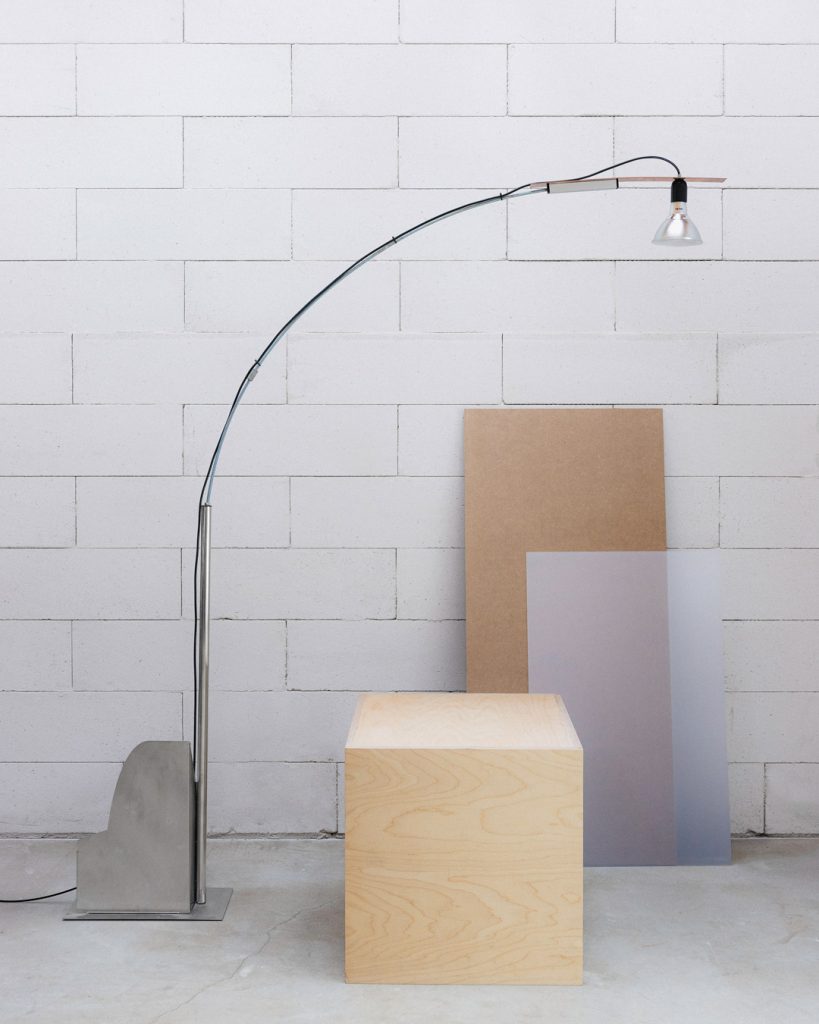-
The Executive
The Executive
New office furniture assembled from a library of possibilities
About the series
The Executive is a furniture series where Jenny Nordberg together with Soeco explore furniture reuse, specifically the reappropriation of second-hand furniture into new designs. Jenny Nordberg’s self-initiated goal was to utilise the least desirable parts, objects and details, from a stock of recyclable pre-owned office furniture. Nordberg has deliberately chosen not to adhere to the most conspicuous functions of furniture parts nor to follow the most obvious design paths that they suggest. Alternatively, she has treated the objects as a catalogue of parts, disassociating them entirely from their original purpose and viewing them instead as uncorrupted raw material; a library of possibilities. In this way, the material is viewed with optimism, opportunity, and flexibility. It loses its past association with ‘waste’ and redundancy. By shifting a simple perception, eradicating expectation and bias (both hers and ours) Nordberg alters the context of these unwanted elements and creates a positive and dynamic environment within which to create and build.
For instance, sound absorbers that were once unsellable have been reimagined as comfortable sofas. An oddly shaped table top has been dissected and reassembled into a new sofa table. Damaged supports taken from adjustable desks are combined with whiteboard pen holders and transformed into lamps. Jalousie cabinets have been turned into sculptural shelving, and so on. Each new object, imagined for use in the ‘Executives’ office, is a novel hybrid; a collage of latent potential pieced together by Nordberg’s unprejudiced viewpoint.
The Executive collection has been produced in close collaboration with skilled craftsmen at Seco’s workshops in Lund. Soeco which is a part of Yllw, which is part of the NO GA Group, shows in collaboration with Jenny Nordberg how they also can work as a producer and thereby taking the recycling industry to a new level.Pieces from The Executive will be available to purchase on a made-to-order basis.
About Soeco
Soeco, located in Dalby outside Lund, is an innovative player in sustainable office furniture. Soeco specialise in giving new life to old furniture. This makes them one of the leading suppliers of sustainable solutions for private and public environment projects such as offices, hotels, and restaurants. Soeco combines high-quality refurbished furniture with new design elements to create custom interior solutions. Their factory renovates and adapts furniture through reupholstery, finishing, carpentry and manufactures entirely new products. Because of this, the company not only contributes to a more sustainable work environment but is also able to create functional and creative interiors that are bespoke to each customer’s needs and values. Soeco’s idea and business model is fundamentally circular instead of linear and the company has the capacity to work both conceptually and scalable. This opportunity for large-scale is seen as positive as more circularity contributes to less emissions. Soeco also works actively to make it easier for both architects, designers and end customers to choose recycling.
About Jenny Nordberg
Jenny Nordberg is an industrial designer MFA from southern Sweden who works in a particularly exploratory and interdisciplinary way. She seeks to expand the commonly-held contemporary notions of design and the designer. Whether working on an experimental, conceptual or commercial project, her practice is always driven by a search for alternatives and counter-strategies to irresponsible mass production. Stylistically, Nordberg’s work is characterised by a brutal minimalism. Chance and opportunity are other recurring elements. Navigating between art and design, her research and studio work focuses on how we produce and consume today, how we have done so historically, and how this might be done differently in the future. By exploring questions such as these, Nordberg seeks to transform preconditions of design and encourage a more engaged and enlightened position for designer and consumer alike.Objects in the The Executive series
All the objects in the series have been created for Seco’s new CEO, Mattias Andersson’s office. The series also marks a new era for Soeco, which, at Mattias’ initiative, is now also acting as a producer by refining hard-to-sell furniture and parts into new furniture and objects. Everything is for sale, and several of the pieces will be mass-produced.
Seating Furniture
Made from sound absorbing partition walls that comes in various designs and dimensions. The challenge here was to create furniture with minimal alterations to the partition walls, as they are difficult to cut. Only three cuts have been made in the sofa and one in the armchair. Otherwise, the dimensions of the different partition walls have dictated the shape of the sofa, giving it character with its protruding armrests. The upholstery is made of natural leather, chosen deliberately because it ages beautifully with use. Other upholstery options are available.
Materials:
Reused partition walls in mdf, foam, and textile
Reused down-filled inner cushions
Padding
Untreated leather with natural imperfections
Reused adjustable feetCoffee Table
A coffee table created using a tabletop with an unpopular shape as raw material. Angles of 45 and 90 degrees were chosen to simplify production. The surface has been painted and treated with charcoal and lacquer. A monochrome color scheme is also available.
Materials:
Reused mdf tabletop with high-pressure laminate
Paint, charcoal and lacquerConference Table
A large conference table that also functions as a dining or writing table. Several tabletops with varying defects and thicknesses have been joined together. Filler and sanding marks serve as decorative elements on the tabletop, which has been finished with a semi-transparent coloured lacquer. Available in different sizes and also with a monochrome color scheme.
Materials:
Reused tabletops
Filler and lacquer paintCabinet
Jalousie cabinets are difficult to sell on the second-hand market – perhaps due to their size and bulkiness, or because the jalousie mechanism tends to become stiff over time. They are easy to acquire but hard to dispose of. Can they be renewed to become desirable again? These cabinets have been repainted, and the roll-fronts have been replaced with doors made from leftover plywood from the carpentry shop. New handles and legs, sourced from old aluminum parts, have been installed.
Materials:
Reused jalousie cabinets
Leftover pine plywood pieces
Reused aluminum profiles from whiteboards and partition walls
Lacquer paint
Floor lacquer paintWall mounted piece
During the creation of this series, a pile of leftover materials accumulated – someone accidentally wrote directly on a discarded plastic sheet, a lone door with an unusual shape, a black mdf board adorned with yellow text, and so on. Some of these pieces live on as spontaneous assemblages.
Materials:
Mdf offcuts
Reused cabinet door
Plastic offcut
Reused aluminum profile from a whiteboard
Mounting adhesiveCeiling Lamp
One of the most challenging furniture components to repurpose is the leftover curved beams from the frames of height-adjustable desks. However, their shape has potential – especially when combined. This became the foundation for a 2.5-meter-wide metal composition. Together with six whiteboard pen holders repurposed as scattered lampshades and electrical fittings, they form a ceiling lamp.
Materials:
Reused beams from height-adjustable desks
Reused aluminum profiles and pen holders from a whiteboard
Electrical fittingsVases
Materials:
Leftover pine plywood pieces
Reused aluminum profilesTable Lamp
Materials:
Reused aluminum profiles and pen holders from a whiteboard
Leftover pine plywood pieceTray
Materials:
Reused aluminum profiles from a whiteboard
Leftover pine plywood piece
Reused adjustable feet
-
Category Archives: Home
-
Tricks From Nowhere
I was labeled as a tricky player early on and have been regarded as tricky throughout my whole career. It was said that I was able to pull out tricks from nowhere.
Judith Polgár
Tricks From Nowhere is a large scale chess game developed specifically for Sergels Torg in Stockholm by Jenny Nordberg in 2024. The chess consists of 32 individual sculptures all resembling the classic chess piece set up. The playing style and manner of chess master Judtih Polgár have been the starting point for both the design and production of the pieces. Polgár is known for her tactical and aggressive style of play, where she likes to set things up for the opponent by acting as unexpectedly as possible. She is a calculating player who allows a planned strategy to be accompanied by disruptions of the moment. Judith Polgár is skeptical about the use of computers in chess because they can’t be manipulated psychologically. Therefore, as much as possible of the manufacturing of the chess was made in an analog way and without the involvement of digital technologies. The production has also been influenced by Polgár’s aggressive and fast approach. Wood has been split with an ax, clay has been thrown and shaped, fire has been used as a finish and brutality has been the in the center of the aesthetics. However, some elements have been bought ready-made so that the production does not fully take place as expected. The various manufacturing processes have been planned in advance, but expressions and results have been shaped in the moment.
The chessboard occupies an area of five by five meters. All 32 chess pieces are unique and composed of different elements of oak, pine and clay. The squares in the playing field itself are made of recycled rubber.
-
-
Mental Note
The Mental Note candelabras derive from a mental note that simply said: What if this material and technique that so often have played the supporting role in many of my projects for once could act as the main character? These aluminium tubes and their plastic joints have due to their lack of attitude served well in contexts where other materials or expressions have played the lead roll. In the Mental Note candelabras the tubes have for the first time no competition, it’s all about them.
-
-
Powder Panels
These are two commissioned pieces for the Nordiska Galleriet Malmö store. They were installed when the long time design store and gallery Olsson & Gerthel was incorparated in the Nordiska Galleriet group 2023.
-
-
Free Applications
Free Applications is a 3D-printed chair based on a rough model of a chair in 1:10 scale. Free, easy-to-use programmes were used for its design and modelling, allowing mistakes generated by the misinterpretations of AI technology at different stages of production.
The search for a quick and flexible process in turn led toward a new kind of aesthetic – or new beauty standard. The time required to manufacture a chair was reduced, and the errors that occurred during production were turned into advantages that determined its final appearance.
The first version of the chair is produced in collaboration with Brightplus, a Finnish manufacturer of renewable materials. The bioplastic filaments, used in 3D printing, are chemically modified and cross-linked polyester materials. The materials are composed of natural renewable monomers and polymers, residues from local industry, and natural dyes. The black material’s colour comes from recycled minerals and forest industry residues. The translucent amber material’s colour is from willow bark, and the translucent blue is produced from the woad plant. The cream-coloured material is entirely obtained from bacteria-fermented, inedible leftovers of food protein production.
Small pieces, size wise easily adapted to a home 3D-printer, were printed and then assembled like puzzle into the final chair.
The Free Applications chair has been produced for and is now shown at the retrospective exhibition Strategies for Moving Freely at Helsinki Design Museum 8/9 – 31/12 2023.
-
-
Strategies for Moving Freely 2nd EditionThe 2nd edition of the book about the practice of Jenny Nordberg. Published in 2023 by Nilleditions. “Strategies for Moving Freely presents a selection of Swedish designer Jenny Nordberg”s distinctive work. Covering a decade of explorations into new ways of imagining and approaching contemporary design, this revised edition is published on the occasion of her first major retrospective exhibition, which takes place at Design Museum Helsinki in Finland. Richly illustrated, it outlines an ongoing search for counter-strategies to our time”s destructive mass production and consumption. In the space between the handmade and the machine-made, control and chance, minimalism and brutalism, we get to encounter everything from her signature mirrors and rapid furniture to sandwiches cast in metal and scents for conceptual ghosts.” Bokus “Jenny Nordberg is arguably the brightest shining star in contemporary Swedish design. Her experimental and forward looking design practice manages to bring together a series of values that for most designers is very hard to achieve, if not unobtainable – It is highly conceptual without feeling factitious, process based yet result orientated, entertaining without being banal, scientific without being technocratic, universal yet markable. At the moment she is running circles around her contemporaries, raising the bar with every new project. She is the guiding light leading the way out of the derivative cul de sac of retro-post-modern aesthetics that has highly overstayed its welcome by now. Designers and design lovers alike – let this book, and Jenny, lead us all forward, and keep moving. In freedom.” Nille Svensson, publisher.
-
- 370586792_24543741511892168_3086077152664388809_n
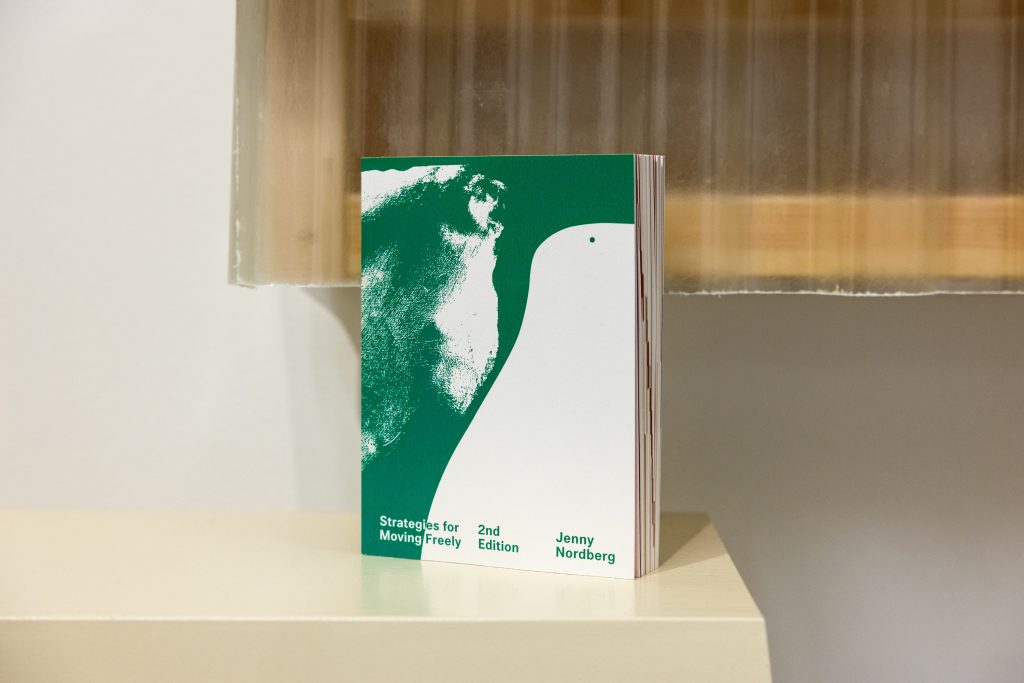
-
Active Cargo
Text by Henriette Noermark
“Transport is absolutely crucial to the machinery of global production, but, given that it still makes huge use of fossil fuels, it is also one of the most problematic elements. During the pandemic, we saw what happens when transport does not work. We have become totally dependent on it.”
When the 400-metre-long container ship Ever Given got stuck in in the Suez Canal in the mid of the pandemic, it became all too clear that the world’s infrastructure is suffering from our ever-increasing need to transport goods from east to west and south to north. Moreover, when Russian forces invaded Ukraine at the beginning of this year, it was not just a tragic military and human catastrophe, but also a reminder of the vulnerability of the vast machinery of global production.
An apt subtitle for Active Cargo – the Swedish designer Jenny Nordberg’s solo exhibition at Vandalorum – might be: ”New shapes and forms made by activating materials by the movement within transport resulting in objects.” Since graduating as an industrial designer in 2005 and plunging into a world of mass production, she has been questioning the system and machinery of production to which society clings. Regarding them as problematic and holistically untenable — we must be able to find alternative solutions. She believes in local production and in the intrinsic potential of design to develop in its vicinity.
For decades we have been talking about the existential problem, which increased freight transport – whether by land, sea or air – creates for the climate and environment. This is the messy Gordian knot that threatens our society, and we have not yet been able to resolve it either politically or structurally. We talk about it. Companies shout about it, greenwashing their ambition to work globally, yet sustainably – at some point in the future. One of the UN’s Sustainable Development Goals (SDGs) is ”Industry, Innovation and Infrastructure”, composed of subsidiary goals for ensuring longer-term results by 2030. They include making industry more sustainable, efficient use of resources and increasing clean, environmentally-friendly technologies and industrial processes. Meanwhile, according to Eurostats’ publication Globalisation Patterns in EU Trade and Investment, international transport figures are still rising steadily and the system is being optimised, making short deliveries and dropshipping the only solutions.
If we cannot prevent transport, perhaps we should take a different approach and look at the possibility of reducing the wasted time and energy? This is certainly what Nordberg believes. She is one of the designers sounding the alarm and not accepting any more excuses. After all, what are the arguments for doing nothing? Will we not gain something far more important if we turn our backs on low prices and fast deliveries? Are not close links and proximity to local production worth more than crossing endless national borders? Is it not time to change those structures we have endorsed for years as the only acceptable ones, with the excuse that things have always been done that way?
Nordberg’s call for action is reflected in her exhibition Active Cargo. She looks at whether we can transform passive resources into active ones by using the physical movements, which occur during the transport of products and objects, as potential production devices in themselves. “I want to make the passive active. When an object is shipped, it moves geographically, but the object itself does not utilise that movement or energy. During transport, it is totally passive,” she says, and questions whether continuing like this is not a pure waste of energy and downright inefficient. She compares it to going to work without working. In physical terms, she presents two machines and a five-metre-long ramp, each imitating their own movement during transport. The vibrations, which reflect the bumping of lorries on roads, waves from the ships and falls, which aim to reflect the many accidents that happen with lost packages. In other words, she removes the geographical dimension of transport, but retains the hypothetical movement. Local materials such as clay, bioplastics, wood powder and biodynamic glue pass through the machines and are turned into objects. The movement of transport becomes the actual machinery of production. Conceptually, she looks at the familiar Euro-pallets with frames, which she optimises with black details, and Perspex and glass elements. She cannot predict how the objects will turn out. Some of them are made in situ during the run of the exhibition, so there is a large element of chance and risk. But she is well versed in welcoming serendipity.
“I often deploy coincidences in my work. When it comes to aesthetics, I regard them as co-creators. There are certain decisions I don’t have to make, since coincidences or pre-established standard goals decide the aesthetics and what happens, happens. By relinquishing control, things can happen within a strictly controlled set-up. I love that way of working.”
Active Cargo is a natural successor to Nordberg’s previous projects. I have previously referred to her as “the designer who feels free.” What I meant was that she does not acknowledge limitations as other designers might, but feels free of restrictions and conventions. She takes an analytical approach and does not stop until she has resolved the situation. She approaches the world as an equation to solve. As a political being, she not only observes, but also engages and wants to change the world for the better. Rather than being naïve about, or blind to the potential of speed in mass production, she sees it as an artistic and conceptual hurdle for figuring out how she can use some of the same techniques in her own studio in Skåne and the local community.
In previous projects such as 3-5 sec and 3-5 min (presented at Vandalorum in 2015), she investigated the quality of the rate at which objects are produced. The same was true when she created hundreds of trays for the Vandalorum restaurant, made in collaboration with Åry Trays in Småland. First she painted the birch veneer directly, using a screwdriver and floor mop. The wood was then pressed into trays at the factory. The combination of Nordberg’s unique touch and the manufacturer’s input spotlighted how mass production does not necessarily negate uniqueness.
The local aspect is important. After all, why not make use of the carpenter, glassblower, ceramist or steelworks around the corner and who can keep a close eye on the process? For the exhibition Den Nya Kartan [The New Map] (2015–17), Nordberg paired a number of designers and producers from Skåne, Småland and Halland. The goal was to create products locally. Quality was paramount, and the project involved devising long-term sustainable strategies.
We need to find resources locally, and produce in our own locality, as opposed to subjecting ourselves to a system of capitalist values that involves millions of containers on the water and equally many lorries on roads throughout Europe. What she opposes is the capitalist, consumer mindset, which forms the basis of the way we operate and to which we have become accustomed. We demand fast delivery, optimal quality and low prices. However, when we order furniture, clothes and homeware from different parts of the world, we are becoming more and more aware of the price we pay in terms of climate, environment and sustainability. So, Active Cargo is an extension of her previous work: a design project that essentially sets out to solve a tangible, relatable and crucial societal and climatic problem. The project tackles the necessary changes, which we as a population, consumers and manufacturers need to make, if we are to continue moving around the globe.
When asked what role humour plays for her, Nordberg answers: “It’s probably one of my main purposes in life.” This positive approach clearly informs all of her work. It is not to be confused with superficiality. But smiling is invaluable when you are working with something as existential and significant as design. “I’m interested in communication and know that humour is a great way to pose serious questions,” she says. It is not simply a way of looking at her works, but a way of facilitating and guiding a conversation in the direction of the important topics we should all be relating to and tackling. The combination of aesthetics, subtle humour and a focus on sustainability is characteristic of her practice, which is essentially investigative, practical, scientific and highly tangible. With her trenchancy and humour, she spotlights challenges and proposes alternative solutions.
While some people only see the surface, others take an interest in the larger context. Nordberg finds both reactions interesting, since the Active Cargo project also involves a quest for new paths towards new aesthetic expressions. She is basically a geek. She dives headlong into things, investigates, dips her hands into the matter of ideas and develops them in a direction that goes against the current — but with Nordberg’s gut feeling and the potential she sees in design. In Active Cargo, not only does she ask questions; she also seeks answers. The exhibition can be regarded as a research project, which, with an optimistic spirit of trial-and-error, seeks knowledge and inspiration for a changed reality. Results are guaranteed: unpredictable results, of which Nordberg cannot be sure at the beginning of the project, but results we can use to discuss and shed light on transport, and hopefully change the current approach to it. Before it is too late.
Summary:
Can a passive part of the enormous manufacturing and consumption system become active? In this case, can the transportation of an object also be the manufacturing of the object?In 2020 128 Trillion tonne kilometers were transported worldwide. This is a number, an amount of shipped goods, that is impossible to grasp. But if one would try… it resembles 16 500 tons moved one kilometer per person living in the world that year.
What would happen if one activated this passiv part of the system where an item or material is moved from one place to another. The movement is happening but the goods are passive. Could they be active instead? Can the energy and movement that exists within transportation be used as energy and movement for production? What would that production look like? What kind of processes and manufacturing methods would that be? What kind of objects could be produced? What kind of aesthetic would come out of this kind of production?
Europe consumes approximately 25 percent of the world’s raw materials, but produces only 3 percent. The transport sector only within the EU, accounted for 25 percent of the union’s total greenhouse gas emissions in 2018. Approximately 80% of the Swedish wood is exported at the same time as 70% of the wood we use in Sweden is imported. This is a good example of how materials today have become global rather than local. We have made ourselves dependent on world wide transportation.
The fragility of this system, both access to materials and the need for shipping, has been vastly exposed by examples like the cargo ship Ever Given that got stuck in the Suez Canal, the delays in materials, spare parts and products caused by the Corona pandemic and how the West’s economic sanctions against Russia after the invasion of Ukraine have affected both material prices and delivery times.
In 2021, the cost of container shipping from China to Northern Europe increased by over 700%. We have developed a system based on the search for profit that now has become its own enemy.How can this system not already be maximised? Why is the energy and the movement that is within shipping not used? How can the system be totally maximised? Active Cargo is posing questions aiming to stress the ones that still believe in the globalised production and consumption system. Active Cargo is not presenting any solutions but rather highlighting a missed opportunity in an already broken system. Active Cargo is on no one’s side, it’s everywhere, but yet nowhere.
Jenny Nordberg, 2022
Made with support by Konstnärsnämnden (The Swedish Arts Grants Committee).
-
-
Open Infinity
Open Infinity’s shape is directly picked up from a container and then reproduced fifty times over. The curve’s predetermined shape makes the design process more effective as many steps can be excluded. The result is a suggestion — ”it could be like this”
The 100% scrap-based steel wire is bent into shape in Värnamo, Småland. Pine grown in Central Skåne is used to create the lamp base. Like almost all the worlds electronics, the ready made light source is made in China. The light fixture is attached with velcro.
All lamps are numbered and signed.
Materials:
Recycled steel wire
Pine wood
Standard lamp fixture
VelcroDimensions:
W 68 cm D 27 cm H 38 cm -
-
Positive Enough
– How do you decide if a smile is true
”One early morning during the covid winter of 2021 I had a rich and vivid dream. I woke up with a clear image of a smiling chair with alluring eyes. I tried to draw it immediately but it was impossible to describe and capture the chair correctly. The smiling chair I saw in the dream seemed to be more of a feeling than something visual.”
Later that spring Jenny Nordberg visited the saw mill of Ingvar Olsson in the woods on the ridge of where she lives. Big slabs of oak wood were lying around and suddenly there it was – the smile. It had the shape and expression exactly like that in the dream.
Most of what characterises Jenny Nordberg’s practice can be found in the Positive Enough chair: A locally based design process, but also a design object that in its brutal and humorous expression presents the materials and manufacturing methods and makes them significant. This is combined with a seemingly carelessly nonchalant aesthetic precision based on meticulousness and experience.
An idea derived from the 19th century neurologist Guillaume Duchenne says that the muscles of the eyes are crucial for a smile to be interpreted as genuine. Spontaneous contractions of the muscles give the right wrinkles, signifying that the smile expresses a true feeling.
Positive Enough challenges the idea of the chair as a utility object, not only because of its unusual proportions that doesn’t put usefulness first – it also appears as anything but a passive object ready to be used. With its roughly-sawn surface the chair has plenty of wrinkles, but eyes are missing. The chair seems to be conscious though, it wants more than just fill up space in the room. Practicality becomes secondary when the chair’s emotional life takes over.
Material: Oak from Trolleholm, Skåne, Sweden.
Surface treatment: Soap
Measurements (hxdxw): Approximately 100x45x300 cm -
-
Accumulations Lamp
The Accumulations lamp was born during the exhibition with the same name, Accumulations, shown at Olsson & Gerthel in 2020.
“The exhibition Accumulations (September 9-26, 2020) at Olsson & Gerthel is based on a library of rejected elements, which through Nordberg’s disruptions are given new function and potential. In the performative presentation, she joints these materials with an assemblage-like technique in order to make unique utility objects, stretching from brutalist bedcovers in textile and metal to lamp constructions, tables and vessels. The leftovers that are used have been collected from subcontractors to Olsson & Gerthel, as well as from Nordberg’s studio, and a declaration of each part’s origin accompanies each final object.”
The floor lamp was an instant favorite when presented in the exhibition. This way of working, presenting three dimensional sketchy objects as possible solutions either as one-offs or smaller series, is one of Nordberg’s preferred working methods .
The production of the Accumulations lamp is carried out in Småland, Sweden. All parts are made from leftover metal except for the brick shaped glass weights that are hand cast in a small glass studio at the island of Murano, Italy.
The lamp and made in close collaboration with Olsson & Gerthel.
-

